Diversity and inclusion pillar of Xylem mission

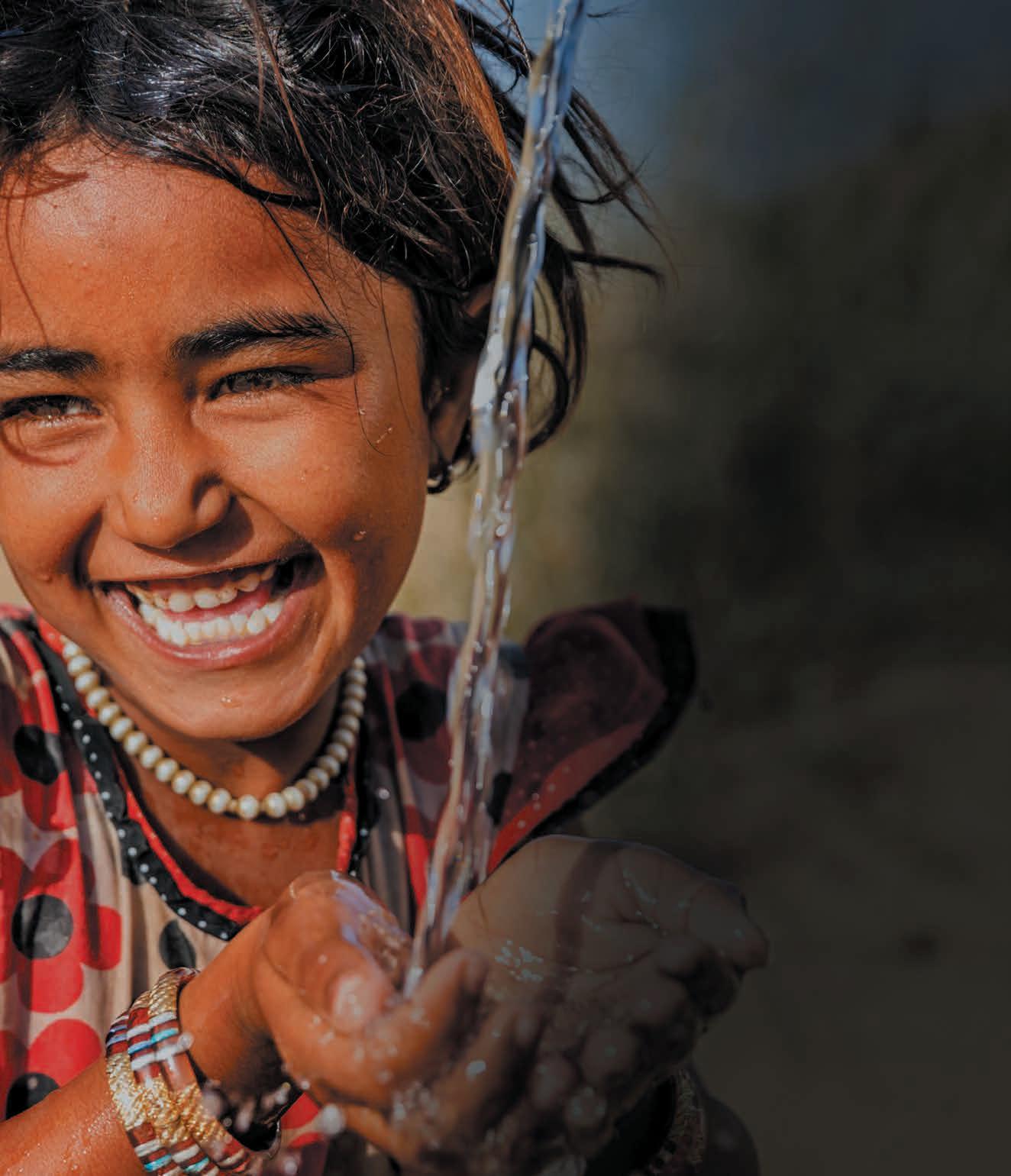
Cultivating

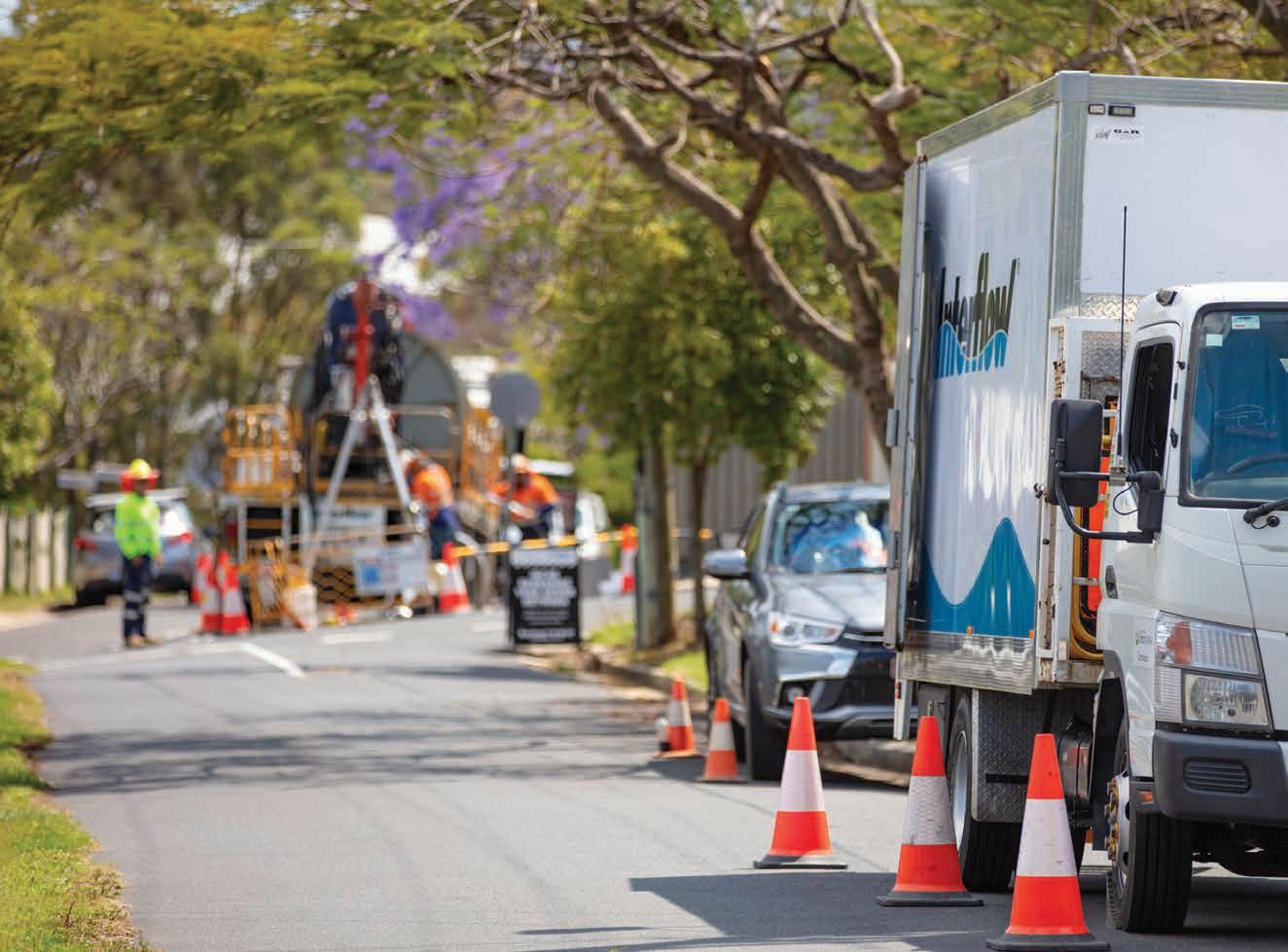





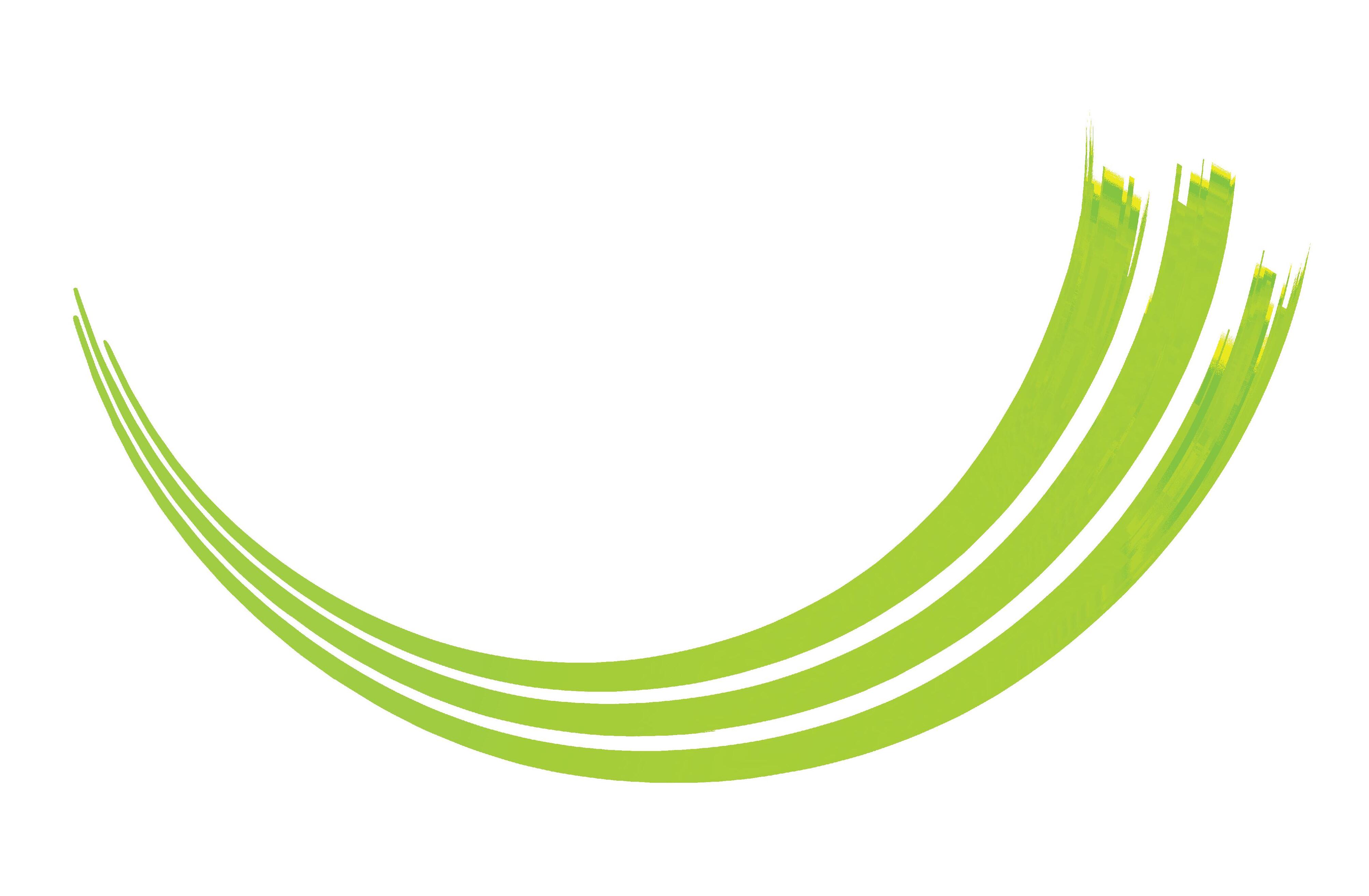




Cultivating









4 Editor’s Note Rising tides and breaking barriers COVER STORY

Xylem Australia & New Zealand (ANZ) is taking action to increase diversity in its global workforce. It is committed to making a difference for women in the workplace, marketplace and community.

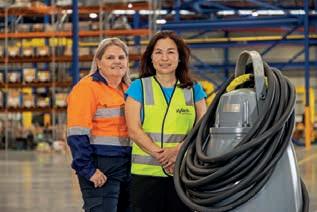
ASSOCIATIONS
11 VicWater
VicWater prides itself on the tagline of ‘Better Together.’ Under the leadership of CEO Jo Lim, VicWater has continued to grow and support Victorian water authorities in various roles, including diversity and inclusion across the sector.
58 The lighter side of water
Have you ever tried to skim a stone across a body of water? Maths can help you do so better.
WOMEN IN WATER
15 South East Water
Diversity flows through water authorities, with Managing Director Lara Olsen as a leading figure.

18 Greater Western Water
Go west for diversity best - GWW is building a positive culture under the guidance of Louise Meadows.
21 Sunwater
Be whom you want to be, as a commitment to inclusivity is fundamental.
24 SUEZ Australia and New Zealand
Strength in gender diversity, along with value creation, innovation and performance.
27 GHD
Creating ripples through representation, as you cannot be what you cannot see.
30 Eco-Detection
Program champions female researcher, with the Peter Cullen Trust and the Derwent Estuary Program.
34 Voeu
Fair go to fare well, as cutting-edge research indicates correlations between diversity and productivity
SUSTAINABILITY
36 Hydroflux
Sustainability central to mission, as triumvirate of co-founders seek to make a difference
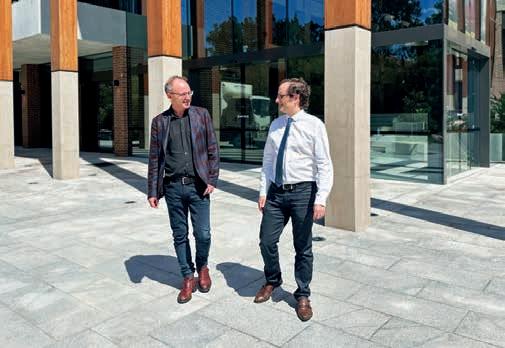
PIPES
40 Interflow
Spin me right round with spiral wound lining
42 Iplex
EZIpit is the easy decision for gravity sewers, ensuring longevity and flexibility in deployment
44 PIPA
Smart, efficient, sustainable plastic pipes are the present and future of water infrastructure


DIGITISATION
47 Kallipr
What’s the right Internet of Things (IoT) hardware for your water network?
50 Taggle
Saving gigalitres a year with Australian-made and designed smart water meters
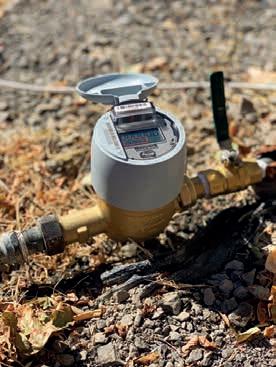
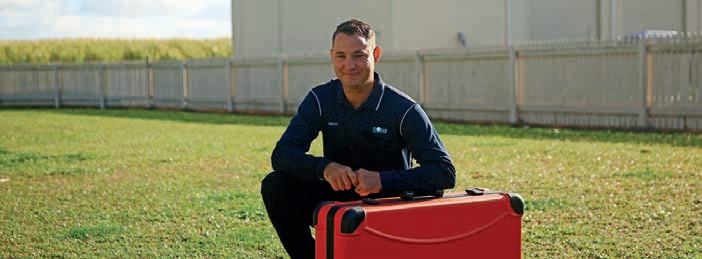
52 Ifm
No wasted blow with moneo, as Internet of Things platform minimises inefficiencies
PRODUCTS
54 Pulsar Measurement
REFLECT on the transducer to track level measurements within your water network
56 Vega Australia
Measuring PULS of water levels with practical radar sensor technology that work all the time.
When I joined Prime Creative Media in June last year, one of the first things I did was to work out the important observances for the water industry. After World Water Day on March 22, I circled International Women’s Day on March 8. The fact that both days fall in the same month is something that I am reflecting on now.
It has been amazing to meet just a small segment of the women making significant impacts on the water industry. When I proposed this topic, some of our regular contributors were keen to lift up their female talent.
Xylem was very quick out of the gate and offered five women across the organisation. Their observations of their support from the water industry and Xylem has been insightful.
The water industry in Victoria has been at the forefront of getting women into the uppermost levels of leadership. The CEO of VicWater, the managing director of South East Water, and the chief people officer at Greater Western Water are proven collaborators who seek to support women and other diversity groups within and without their organisations.
The role of mentors, role models, and personal advocates became a common thread with the women in the water industry I interviewed. Some had male mentors; some had female mentors, and some had both – the critical aspect is that the mentors were vital in supporting and advocating for them at the appropriate time.
The research conducted by Voeu on the distribution of senior female leaders between local councils and water authorities was also an interesting read. Local councils have enormous opportunities to step up
and employ more women as CEOs, managing directors, general managers, and asset managers.
Also, in this issue, we spoke to the co-founders of Hydroflux about what drove them to establish the company, their desire to create a better world, and what they want to do in the future. Their mission to combat climate change is proof positive that their sustainability goals are fundamental to the company’s being.
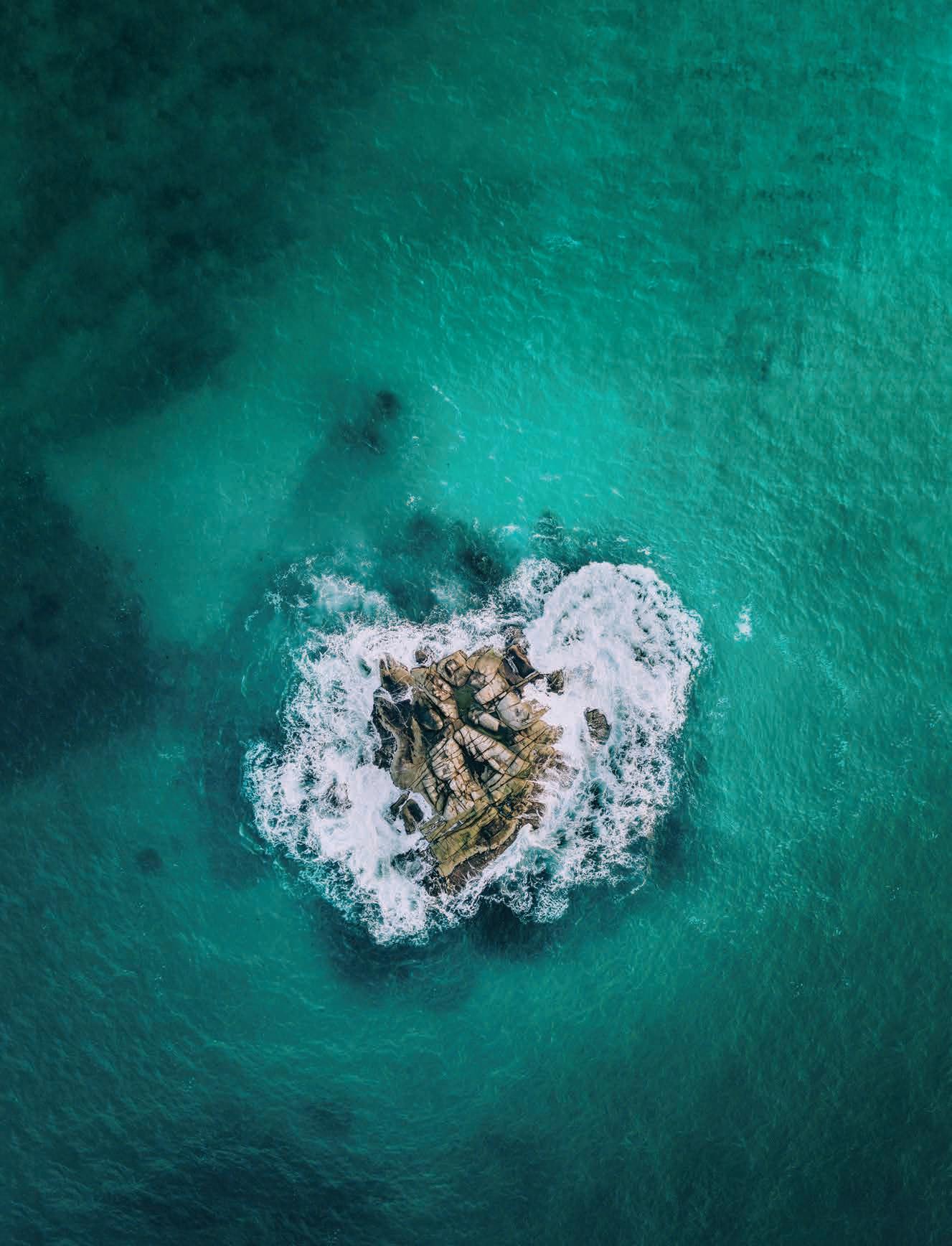
Another aspect is the importance of pipes in our industry. It is almost impossible to travel through any city in the world these days without some work being done on pipes. Indeed, the volume of concrete pipes being replaced with plastic or relined is enormous. It is companies like Interflow and Iplex that have new developments to reduce maintenance costs on an annual basis.
Based on the interest from the water industry, I can see Inside Water examining diversity and inclusion regularly for years to come. It is an important social issue that touches on a massive range of water-related issues, and I look forward to your thoughts on the matter.
Chief Executive Officer John Murphy john.murphy@primecreative.com.au
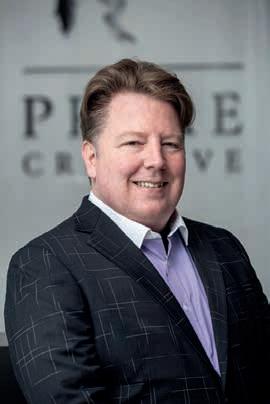
Chief Operating Officer Christine Clancy christine.clancy@primecreative.com.au
Group Managing Editor Sarah Baker sarah.baker@primecreative.com.au
Managing Editor Mike Wheeler mike.wheeler@primecreative.com.au
Editor Chris Edwards chris.edwards@primecreative.com.au
Design Daz Woolley/Tom Anderson
Head of Design Blake Storey blake.storey@primecreative.com.au
Design Production Manager Michelle Weston michelle.weston@primecreative.com.au
Brand Manager Chelsea Daniel chelsea.daniel@primecreative.com.au p: +61 425 699 878
Client Success Manager Glenn Delaney glenn.delaney@primecreative.com.au
Head Office Prime Creative Pty Ltd 379 Docklands Drive, Docklands, Victoria 3008 p: +61 3 9690 8766 f: +61 3 9682 0044 enquiries@primecreative.com.au www.insidewater.com.au
Subscriptions +61 3 9690 8766 subscriptions@primecreative.com.au
Inside Water is available by subscription from the publisher. The rights of refusal are reserved by the publisher
Articles
All articles submitted for publication become the property of the publisher. The Editor reserves the right to adjust any article to conform with the magazine format.
Copyright Inside Water is owned by Prime Creative Media and published by John Murphy.
All material in Inside Water is copyright and no part may be reproduced or copied in any form or by any means (graphic, electronic or mechanical including information and retrieval systems) without written permission of the publisher. The Editor welcomes contributions but reserves the right to accept or reject any material. While every effort has been made to ensure the accuracy of information, Prime Creative Media will not accept responsibility for errors or omissions or for any consequences arising from reliance on information published. The opinions expressed in Inside Water are not necessarily the opinions of, or endorsed by the publisher unless otherwise stated.
The Hydroflux Group consists of eleven specialist water companies serving the municipal, mining & industrial sectors. Our offerings include design & construct projects, technology supply, aftermarket services and chemicals.

Women are underrepresented in the water sector as a STEM field. Such a topic has been the cornerstone of many conferences, and Xylem is one company taking action to increase the diversity of its workforce.
“AS WE ADVANCE our vision to solve the world’s escalating water challenges through innovation and expertise, we are committed to creating an organisation of diversity, equity and inclusion, where everyone feels involved, respected, valued and connected, and where everyone is free to bring their authentic selves and ideas.”
So said Patrick Decker, the President and Chief Executive Officer of Xylem. As a member of the United Nations Women Empowerment Principles community of companies, Xylem is committed to making a difference for women in the workplace, marketplace, and community.
Part of that commitment to supporting women was the creation of the Xylem Women’s Network. Xylem Women’s Network exists to advance the professional development and impact of women at Xylem by providing a supportive network to exchange ideas, facilitate learning opportunities, advocate for equality of opportunity, and unlock leadership potential.
With that in mind, Inside Water spoke to several women around Xylem Australia & New Zealand (ANZ) to learn about them and how Xylem supports their journey in the water sector.
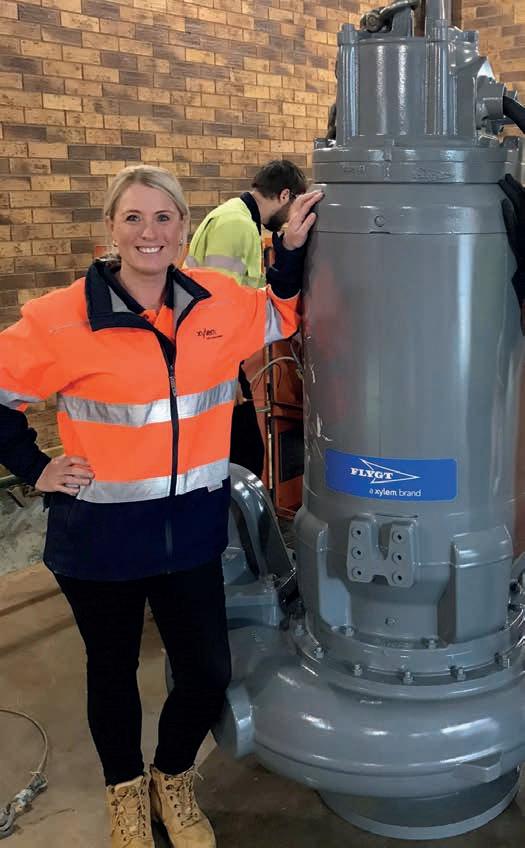
Kellie Banks –Market Manager VIC, NSW, TAS Banks has worked at Xylem since 2003 and has progressed through the ranks. While the company has changed and evolved, the people and culture are fundamental to how Xylem operates.
“Xylem has supported me by providing opportunities to work
across multiple roles and in different teams within the company,” said Banks. “In doing that, I’ve developed deeply transferrable skills that I can use in multiple roles. The other fantastic thing is that they have allowed me to advance my career at my own pace. I’ve been able to define when and what is best for me. Having that option at Xylem has been incredible.”
In the eyes of Banks, diversity within the water sector is vital for its progression and attractiveness as an employer of choice. Another point is promoting the positive values of working in the water industry.
“There is plenty of evidence to suggest that the younger generation is more value-driven regarding potential employment fields,” she said. “The water industry is a perfect direction for so many young people, given its commitment to environmental protection, looking after remote and rural communities, sustainability, climate change, vulnerable people, and various other mission-driven outcomes. There are so many ways for young people to develop a great work/life balance that satisfies their personal and career goals.”
Banks also pointed out how Xylem gives women visibility through the Women’s Network and the ANZ Women in Leadership Group. There are also many opportunities for mentorship within the organisation that she believes are important.
“It’s had a positive impact on my career,” she said. “In my career, I’ve had a couple of informal mentors that believed in and advocated for me. Their support has been part of the reason for my progress. I’m sure I can give back in due course.”
Macarena Diaz –Process Design Engineer
Diaz is an experienced chemical engineer who is originally from Santiago, Chile. She completed her PhD in chemical engineering in 2021 in Australia, following the completion of her undergraduate and master’s degrees at Universidad de Santiago de Chile (also known as the University of Santiago, Chile).
“My parents were always very keen on recycling and looking after the
environment,” said Diaz. “From a young age, I had a sense of looking after and being responsible for the water. When I started studying it at university, I loved the complex biology of the water treatment process.”
While Diaz is relatively new to Xylem, she has found them to be an employer that cares about its projects and people. Xylem actively recruited her following the completion of her PhD.


“The thing I appreciate about Xylem is the number of women in senior roles across the organisation,” she said. “For example, my team leader is Chris Liu, and she is highly skilled on the technical side. It shows that Xylem supports women’s aspirations to take higher positions in technically complex environments. Similarly, when I was working in Chile, my manager was female. It shows that companies like Xylem will value and reward you for your effort if you work hard.”
Diaz believes engaging with women is the most important way to attract them to the water
industry. That engagement must happen at the earliest opportunity, whether in high school or university. “I also think offering more internships within the water sector is important,” said Diaz. “Young people can see the impact of their work, their career’s potential and what they can contribute to their communities. That emotive reward can give them the personal drive to head into the water industry.”
Sandra Indramohan –Customer Operations & Supply Chain Director
Indramohan joined Xylem from New York after an extended period in consumer products. She admitted that while the water industry was one that she stumbled into, it is a sector that she has discovered touches everything.
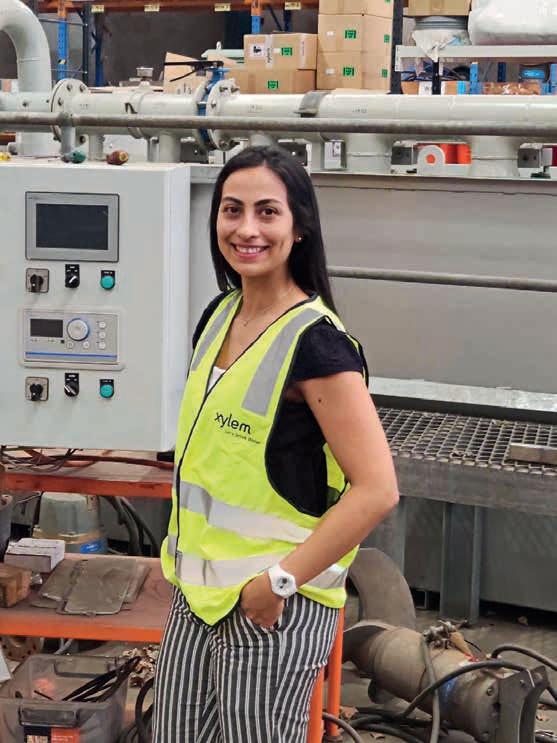
“In some regards, it’s both a visible
and invisible industry. We wake up in the morning and turn on the tap. Things are fine because clean water flows through it. At the same time, people don’t realise the amazing career opportunities in the water industry. It was only when I entered the sector that I realised that this is a space that touches every facet of life,” she said.
Indramohan noted that she was not a traditional candidate for her role, but Xylem understood that they needed a different sort of person for the future of the business.
“I’ve been trying to do this for other women and looking at their transferable skills,” said Indramohan. “I look at their potential and what I can teach them. It’s easy to teach someone technical skills or operational processes. However, it’s extremely difficult to teach someone to be empathetic or how
Xylem supports women’s aspirations to take higher positions in technically complex environments.
”
to be a great communicator. These are qualities that women tend to have naturally. If we can build up their confidence, they can support each other further, and that’s how we can bring more women into leadership ranks.”
Recruiting more women into the industry can be challenging, and she sees similarities between how we attract women and younger talent. One area that Indramohan believes that the industry could improve on is using different language to recruit the best young talent. She is convinced that the younger generations want to work for companies or industries that make
At a World Water Week session in 2022, Xylem’s Senior Manager of Enterprise Content, Enterprise Communications & Public Affairs, Anna Hildell, hosted a session titled “How to empower the next generation to close the gender gap.”
Hildell summarised Xylem’s approach like this:
“At Xylem, we recognise the power of diversity. We know how important diverse perspectives are in our mission to solve water. We wouldn’t be the company we are today if it wasn’t for diverse perspectives, voices, and opinions at the table.”
a difference in the world and have similar value propositions.
“Young people care about sustainability,” she said. “Young people care about reaching underserved communities. That is one of the things that we do in the water industry. At the same time, I am not sure that we’ve put our best foot forward in explaining that to young graduates looking to enter the workforce for the first time. In recent years, we have been focused on getting that message out and are now seeing candidates who tell us that they were drawn to apply because of our corporate social responsibility program.”
Chris Liu –Engineering & Design ManagerOriginally from Shanghai, Liu has spent 21 years with Xylem ANZ. She has a family history of engineering, so heading into water and wastewater felt like a natural progression. Having graduated from Tongji University in Shanghai in 1994, Liu started with one of Xylem’s brands in 1996, operating out of China. It has been a long journey, where she has been able to use her love of maths and physics to work on major environmental issues.
“Back in 1988 or 1989, environmental protection was not on the agenda for the Chinese

The more women see other women in the industry, the less they will consider it male-dominated.
”
government,” said Liu. “However, my family all felt this would be important because water and water treatment are our lifelines. I studied environmental engineering, primarily in water and wastewater treatment.”
Liu prides herself on her career with Xylem and the support and opportunities she has had with them. Her constant development and progress in her career meant that she has not had to go elsewhere to find new challenges. Liu currently leads a team of seven engineers in multiple disciplines to provide engineering and design services across Xylem Australia and New Zealand.
“When I first joined Xylem, I am pretty sure I was the only female on the technical team and probably one of a few new immigrants. However, my manager was very supportive, and I have never had any concerns about being a minority in the space,” she said.
Liu has excellent role models in her family that encouraged her to take up engineering from a young age, and she has never looked back. She does note the importance of looking after other female engineers and staff across the organisation.
“It’s important to follow your interest and not to think about the things that might hold you back,” said Liu. “Don’t get frustrated by things you cannot control. In my case, I got a lot of support, and I’m now providing that support to others as a role model for younger female engineers within the company.”
Kristy Rua – State Service Manager NSW
Rua is an experienced Service Manager for Xylem in New South Wales. She is customer service oriented, focusing on developing and supporting her team to provide high-level service to Xylem’s New South Wales customers.
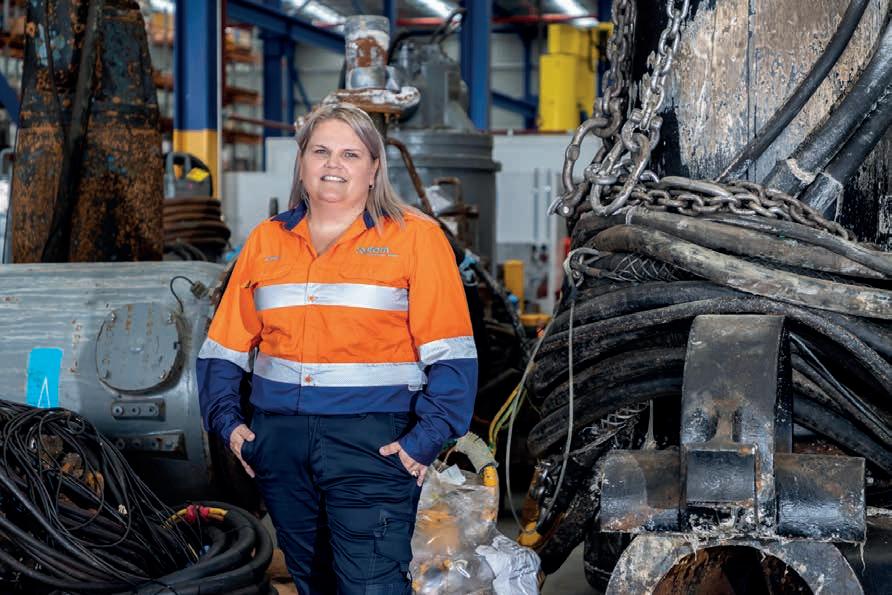
She has been with Xylem for 15 years, having found them close to home during a challenging period in her family’s life. Xylem supported her during this period, which was rewarded with her long service that continues to this day.
“I started as a Service and Rental Coordinator,” said Rua. “I was promoted to Service Manager for our Sydney branch in March 2018.
In July 2019, I was asked to take on the Service Manager role for our Newcastle Branch. In June 2021, I became the State Service Manager for New South Wales, allowing me to
expand my leadership skills further.”
As the State Service Manager, Rua manages teams of people across New South Wales. She is responsible for setting and maintaining customer satisfaction standards while providing a highquality working environment that encourages productivity and motivation. Rua believes she is still new to the role and constantly learning, and Xylem supports her as she develops.
“Xylem has a female networking program ANZ Women in Leadership, where we formally meet once a year,” she said. “We also have our internal communications channels as group support. Xylem has great internal training programs and provides development and career support.”
For more information, visit www.xylem.com/au
Xylem has a female networking program ANZ Women in Leadership, where we formally meet once a year.

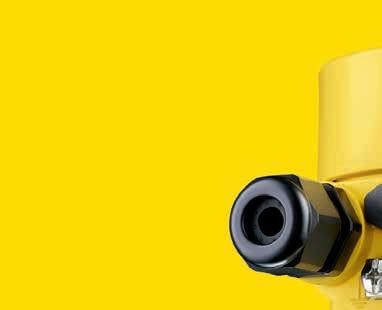
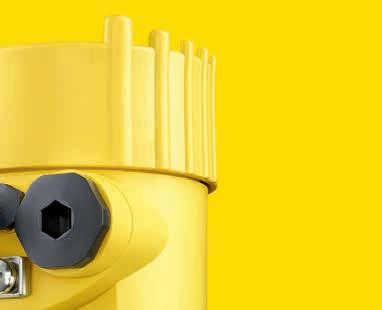




VicWater prides itself on the tagline of ‘Better Together.’ Under the leadership of CEO Jo Lim, VicWater has continued to grow and support Victorian water corporations in various roles, including diversity and inclusion across the sector.
“THE PEOPLE IN the water sector, to me anyway, have a genuine passion and commitment for their work. They are here to deliver an essential service to the community and to provide overall public value for Victoria. Everyone I deal with in the water sector clearly understands that that is their purpose.”
These are the words of Jo Lim, chief executive officer of VicWater. VicWater is the peak body for water corporations in Victoria. It plays a vital role in the Victorian water industry. Its purpose is to influence government policy, provide industry forums on priority issues, and disseminate news and information to members and stakeholders.
Lim has been with VicWater for close to four years. She has found it to be an industry full of passionate people with a strong desire to come together and collaborate wherever possible.
“In Victoria, we have 18 water corporations that do not compete
with each other,” said Lim. “Each water corporation has its service area and is owned by the same government shareholder. That has led to an incredible culture of collaboration where the water corporations want to come together on different topics. Like we say at VicWater, we are better together. The water corporations come together to achieve greater efficiencies across the sector, introduce innovations or achieve better outcomes for their customers and community overall.”
VicWater operates a Women in Water Directors Network, which came about due to government policy. Lim explained how VicWater came to run the network.
“In 2015, the then Victorian Minister for Water, the Hon. Lisa Neville MP took a deliberative action to achieve a 50/50 gender balance on water corporation boards,” Lim said. “It


was government policy, but she was the first minister to implement it by appointing several new female board members in one fell swoop, rather than doing it over a longer period.”
When this happened, it introduced several women to the water industry who had little to no experience with
the sector. While there was no doubt that these women were experienced non-executive directors, it took time to adjust to the industry.
“The Women in Water Directors Network was formed in 2016 as an initiative of several female directors. It was originally an informal network but was formalised by VicWater at the request of the female directors. The then-CEO was more than happy to do so. The initial purpose was to support all the new women entering the sector through peer connections, mentoring and networking events,” said Lim.
At the time, they would hold three or four events per year where they would
come together and support each other. Over time, the network has become more formal with a fleshedout mentoring program. It has since introduced an Allies Program, which Lim compares to the Champions of Change Coalition. The Allies Program incorporates male directors who support gender equality.
“VicWater has also expanded its programs to include catchment management authorities across Victoria,” she said. “It’s been fantastic to have about 200 female directors and chairs across water and catchment management authorities. It continues to grow; it’s active and always evolving.”
It’s not about the numbers Lim is keen to point out that mere numbers are not the point of the Women in Water Directors Network. There are much bigger cultural, attitudinal, and behavioural issues to discuss.
“With the last round of board appointments in 2021, the number of female directors in water corporations reached 67 per cent, and female chairs hit 66 per cent. The question gets asked – ‘If you’ve got the numbers now, what do you still need a women directors network for?’” said Lim.
“Gender equality is more than numbers. It is about embedding
» Quality and collaborative HDD design and construct services
» Expertise to advise at the right time in the project delivery cycle
» Gas, water and sewer, rail, road, power, telecommunications, mining, residential development, renewables and hydrogen
» Maxi-rigs capable of long and wide diameter bores in hard rock and difficult conditions
» Building a future we all look forward to

Does the industry have a culture that would support a 50/50 gender balance... without a government mandate?
Maxibor is using its design and construct expertise to deliver better project outcomes to asset owners and principal contractors alike
gender equality within the entire organisational culture and ensuring that the behaviours and attitudes flow from the boardroom through the whole organisation.”
“I know members of the network are keen to use their position on their boards to influence their organisations around gender equality,” Lim said. “Many are actively doing that. I think that’s where I see the network taking a broader view across the industry of gender equality. It’s not just at the board level or non-executive director level. It’s within the corporation and trying to embed that within the culture of the water industry. The reality is that the requirement for a 50/50 gender balance results from current government policy. That could change in future, so does the industry have a culture that would support a 50/50 gender balance for board appointments without a government mandate?”
The frozen middle One area of focus for the Women in Water Directors Network is improving opportunities for women
at all levels. Lim understands this at a fundamental level and points to the Victorian water industry’s Equity, Diversity and Inclusion Strategy. While the five-year strategy is being updated this year, a lot can be learned from the previous iteration.
“VicWater produces an annual performance report against that strategy every year,” Lim said.
“Within that, we have a target of a 50/50 gender balance within senior leadership roles – that is, the managing director level and the next two tiers down. We are currently at 44 per cent female managing directors and general managers, a dramatic increase from two years ago. The same cannot be said for the next tier down, which tends to be stuck at about 35 per cent. The Women in Water Directors Network calls this the frozen middle,” said Lim.
The frozen middle refers to women stuck in middle management and finding it difficult to progress in their careers. VicWater is not the only group in Victoria examining this. The Department of Energy, Environment and Climate Action (DEECA) is also studying this area,
Lim believes that women will continue to make an enormous difference in the water industry for generations.
following instructions from thenMinister Neville to set up a program for executive women in the water sector.
The future of VicWater and Women in Water
VicWater is developing its strategic plan for the next five years, which finishes at the end of June. Lim is engaging with its members and the board. She continues to raise VicWater’s profile, build its reputation, and show its credibility within the industry. At her core, Lim knows what is most important for VicWater.
“We must focus on best supporting our members to meet their challenges and take advantage of whatever opportunities arise,” she said. “We’re working with our members to prioritise the issues they want us to work on. There are obvious things such as climate change adaptation, the sector’s financial sustainability, Traditional Owner participation, and community engagement. There are also workforce issues around attracting and retaining talent as well as looking after the safety and wellbeing of our workforce.”

The ifm moneo platform goes beyond monitoring and detection, it gives you full visibility and control over your assets allowing you to perform maintenance at optimal times.

You don’t need a data scientist or analytics expert to know the condition of your machinery. A self-service tool that enables successful predictive maintenance programs through the help of AI methods.
Pump stations and submersible pumps face many challenges causing unplanned breakdowns. The moneo solution can detect the following issues:

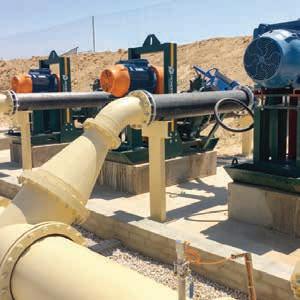

n Predictive monitoring of bearings, gears and electric motors
n Rotating pump parts
n Pumps rotor and valves
n Water pressure, temperature and flow rate at the pumps outlets
n Faulty or damaged bearings
n Faulty or damaged seals
n Wear issues and rub issues
n Unusually high signatures in grinders and macerators
n Imbalance n Cavitation n Looseness 1300 365 088
| www.ifm.com/au
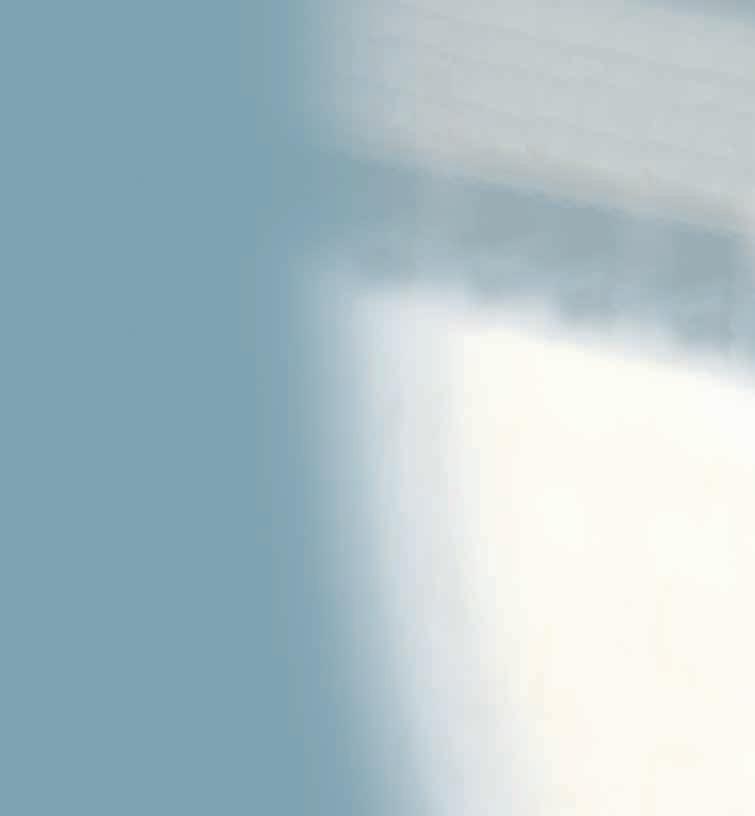
“INCREASINGLY, WE’RE SEEING people from different industries, fields, and backgrounds entering the water industry. The sheer variety and scope of what is needed in the sector means that we’ll be able to draw from a range of different talent pools that we may not have previously attracted. We’re really excited to see our industry changing and becoming more diverse,” said South East Water Managing Director Lara Olsen.
She said South East Water is committed to building an inclusive workplace that reflects the diversity of its community and customers. To achieve this, it has created a Gender Equality Action Plan (GEAP) to help plan, implement and measure the change in the workplace.
South East Water’s vision for gender equality is to be a safe, progressive equal-opportunity employer where all employees are valued and respected for who they are. South East Water will embrace, celebrate, and reward their employee’s rights, talents, and

expertise, free from discrimination, prejudice, or unconscious bias.
It’s an area that Olsen and the other team members at South East Water are passionate about. She joined South East Water in February 2020, following a varied career incorporating consulting, renewable energy, large-scale infrastructure, industrial products, and charitable organisations. Although the organisations are different, they have three comment components.
“When I look back on my career, I see that every organisation I’ve worked for has used data to drive insights,” she said. “They also support vulnerable customers while looking 10, 20, and 50 years into the future to plan for their future. This is also true of the water industry.”

“Generally speaking, women make up less than ten per cent of CEOs in STEM industries,” said Olsen.
“However, that is not the case for the Victorian water sector. When I see the proportion of women that are chief executives or managing directors in the water industry, it is significantly higher than ten per cent. I’d say that water, particularly in senior leadership positions, has made a good start at attracting and promoting women.”

Although Olsen is proud that the water industry is leading the way in driving gender diversity at the executive level, she also recognises there is a long way to go. She believes that while the industry is in a good starting position, it can do more to ensure it is true at all levels and that we achieve broader diversity than just gender diversity.
“Overall, our organisation has close
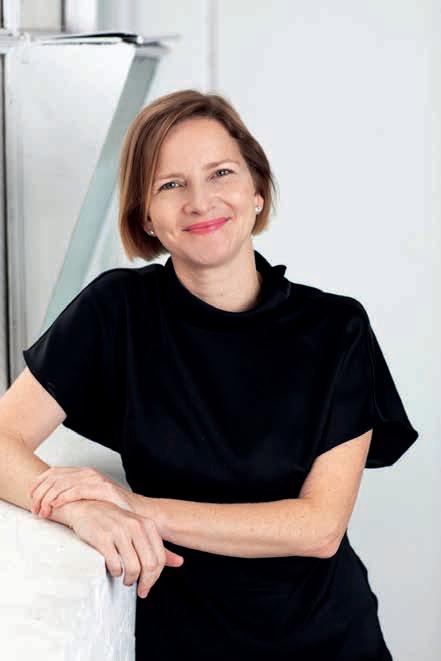
Although the water industry has traditionally been a male-dominated space, more water authorities are taking action to create a more diverse workspace. Managing Director of South East Water, Lara Olsen, is a leading figure in this campaign.
to an even split between men and women. However, we have had a real focus on our senior leadership positions. We want to increase our proportion of women at that level. Over the last two and a half years, we’ve seen an increase of female representation at this senior level from 25 to 37 per cent,” she said.
Increasing diversity needs a multifaceted approach
South East Water has taken a twopronged approach to increase employee diversity. The first has been addressing unconscious bias in its recruitment processes. That has seen panels work hard to have equal gender splits into the shortlists and interview groups.
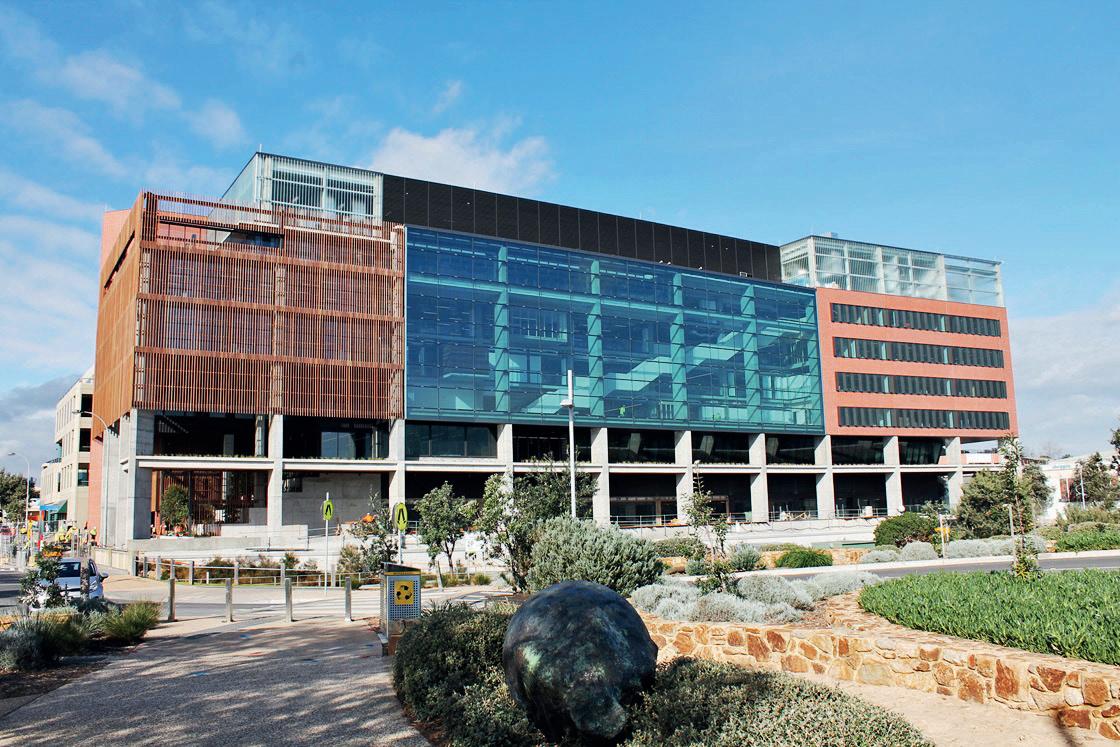
“The second aspect was to look at the areas where we have significantly more men or women in particular roles,” Olsen said.
“It is true that we have a higher proportion of males in certain areas of our operations and maintenance
to change that. Is it something about how we’re explaining jobs, creating jobs, or our processes that means we’re not seeing equal applicants come through?”
Making the water industry an attractive career for all
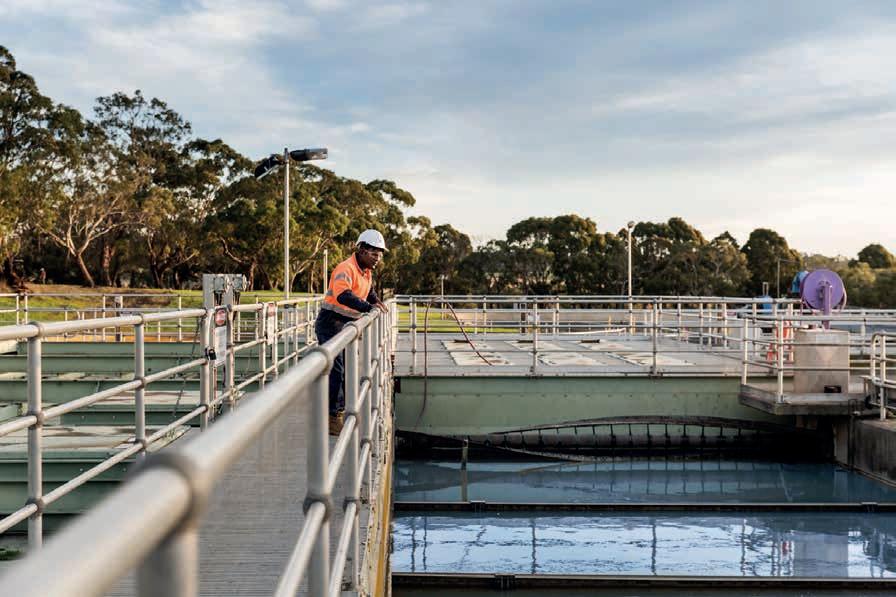
In Olsen’s eyes, one of the biggest challenges is encouraging and attracting women and girls into STEM subjects.
“At the most fundamental level, we should be working at the high school level to attract people of all backgrounds and diversity groups to study STEM subjects. That includes girls. Research indicates that high school girls are actively considering their future careers. Part of that
Olsen believes that there are two areas in which the water industry can help girls and people of different backgrounds.
“The first area is to help girls and people of different backgrounds to become aware of engineering,” said Olsen. “The second part is letting them know they would be good engineers. I know I didn’t have any engineers in my life, and I don’t think I would have done engineering unless my science teacher talked to me about becoming an engineer. I think, ultimately, it is a question of how we raise the profile of engineering and STEM to everyone.”
From Olsen’s perspective, engineering is an exciting career choice that should appeal to people from all backgrounds, particularly those who want to work on critical global issues such as the environment and climate change. A reliable drinking water and wastewater service are central to Australian communities’ economic and social prosperity, and the industry offers prospective employees the opportunity to work on varied and exciting projects, from large infrastructure projects to developing new sensor technology and devices that are changing the way we think about water network management.
“I think that once people realise that engineering is not sitting in a dark room, but the ability to work on and solve some of the world’s most important challenges, they’ll be more interested.”
For more information, visit southeastwater.com.au
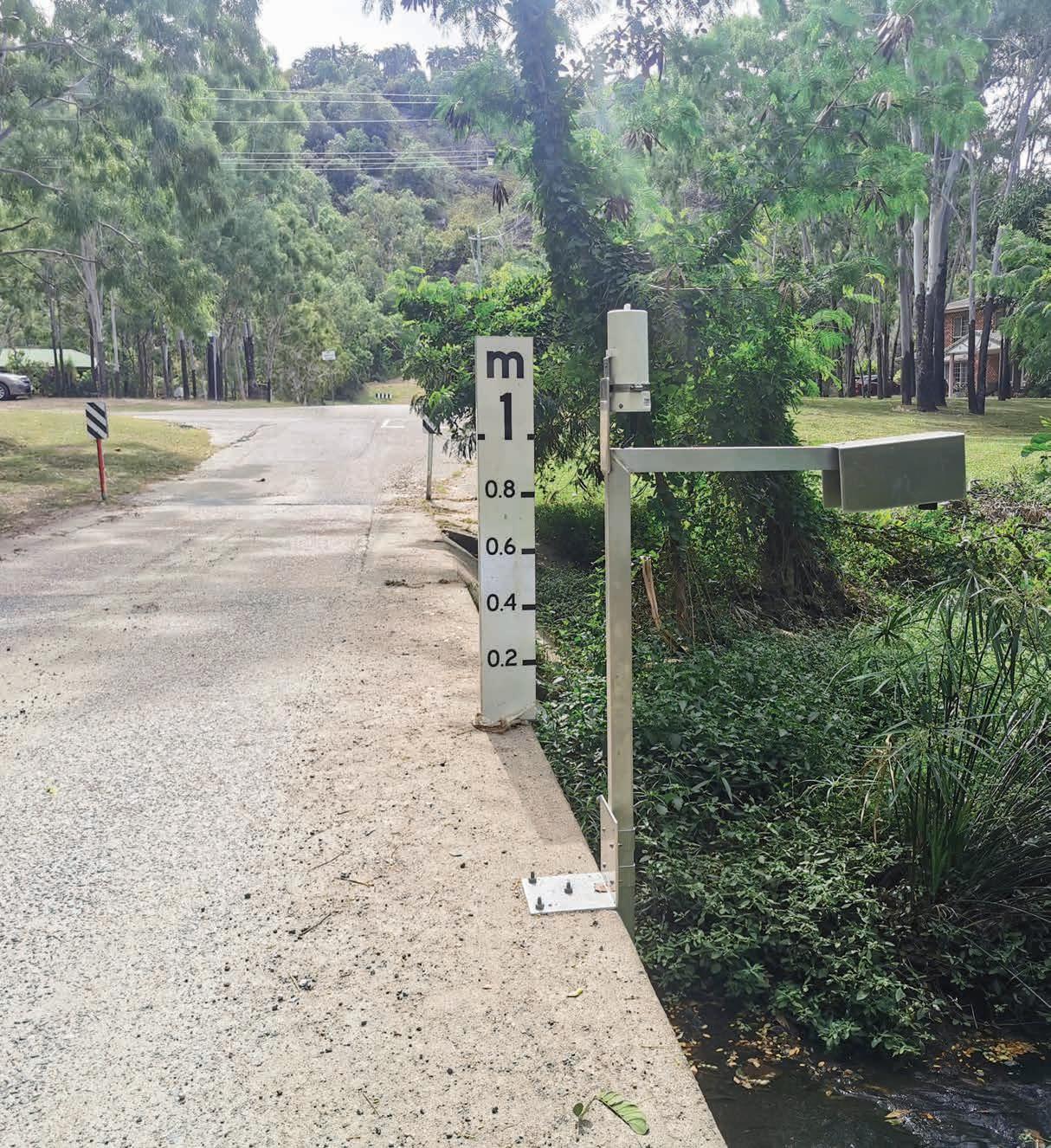
“AT GWW WE take great pride in our diverse workforce, which brings a breadth of experience, ideas, and innovation. It also reflects our culturally rich service area and enables us to be better equipped to deliver trusted services for these customers and communities,” said Louise Meadows, Chief People Officer at Greater Western Water (GWW).
Meadows joined the water industry in 2013 after 15 years in the banking sector. Like so many people who enter the water industry, she found herself staying longer than planned.
“The sector appealed to me immediately. A strong sense of care and purpose resonated with my own personal values. I had not experienced this to the same extent in any other industry,” said Meadows.
And she did not hesitate to take the opportunity to step up to become the General Manager of People and Culture at City West Water (now GWW).
In the ten years Meadows has been in the sector, she has seen a massive shift in how women are supported.
“All water utilities are committed to inclusion and equality in the workplace, which is reflected across the pledges and action plans,” she said. Meadows pointed to the fouryear Gender Equality Action Plan (GEAP) at GWW and how it maps the creation of a sustainable culture that
supports female talent. It represents their absolute commitment to supporting female employees in their careers and helping them to thrive.
“The key outcomes of the GEAP are to retain gender equality in leadership at all levels, improve economic security for women, achieve greater gender diversity in customer, operational, field and STEM functions and build a safe and respectful workplace for all. Collectively this provides the foundation for enabling women in the GWW workplace to progress and succeed in their careers,” said Meadows.
She believes that the industry has become much better at communicating the value of equal gender representation in all roles. Meadows pointed out that society

At GWW, a little under 50 per cent of the leadership team identifies as female. Significantly, six out of eight executives are female. This demonstrates the opportunities that exist within GWW for high-performing female staff. The Board is also representative of GWW’s commitment to diversity and gender parity with four female members and representation across First Nations, disability and LGBTQIA+ communities.
is seeing more profiles of individuals in positions not traditionally held by women. Leadership and networking programs such as The Women in Water Leadership Program and VicWater’s Women in Water Directors Network help to nurture and support women to thrive as leaders.
Attracting and retaining the best female talent
GWW’s commitment to nurturing female talent is reflected throughout the organisation – from culture and leadership to policy and people processes (recruitment, performance, skill, and succession).
Career progression for women is supported by a network of mentors and the Women in Leadership Development (WILD) program, of which GWW is a member. It allows emerging female leaders to build influence, create impact and develop lasting networks.
“We also have our new Parental Plus leave policy, which makes
As a new organisation, Greater Western Water is building a culture founded on respect, inclusion and diversity. Chief People Officer Louise Meadows is leading the charge on developing a supportive workplace and culture that sees passionate and motivated people thrive.
access to parental leave far more equitable and inclusive and provides greater flexibility for caregivers,” Meadows said. “The policy combats gender stereotypes and allows employees to access 16 weeks of paid parental leave from the day they start and a superannuation top-up on return. It recognises the importance of flexibility for new parents with an option to take leave in three blocks over two years.”
Meadows pointed out that GWW is always looking for opportunities to address outdated policies, such as primary and secondary carers. As an organisation, they want to build an inclusive, family-friendly culture that reflects the real lives of their people.
GWW values everyone for who they are and what they can bring. As an organisation, it aims to be as diverse as the communities they serve.
Women that deserve lifting up Meadows said there were many notable examples at GWW but highlighted two when asked about some of the talented women at
GWW. The first is Anafrid Bennet, a cyber and technology leader and strategist.
When she joined GWW, Bennet’s skills and values-based leadership saw her quickly rise to lead teams responsible for consolidating the technology infrastructure and managing critical tech and cyber risks. In 2022 Bennett was Highly Commended by the Australian Women in Security Awards – One to Watch in IT Security, and has been recognised in the Chief Security Officer (CSO 30) Australian awards.

“Another talented woman making an impact is Alexandra Mobilia. She started her career in soil science with an engineering science and environmental engineering degree from RMIT. We were excited when Alexandra joined our inaugural graduate program in 2019, rotating

through several parts of the business to understand all aspects of our service delivery, from planning and construction of our assets to continued maintenance and operation,” said Meadows.
After the program, Mobilia became an engineer in the Product Quality Team, representing GWW’s sewage quality management system. She works widely across the business and creates strong relationships across the industry.
“I’m really proud of how GWW is providing her with the scope, guidance, and support to experience multiple roles within GWW to broaden her career within the water industry,” said Meadows. “It is just one example of how we support all of our people, particularly women.”
For more information, visit www.gww.com.au
Over six years later, I am constantly grateful for the challenging and supportive work environment I’ve found myself in.
”
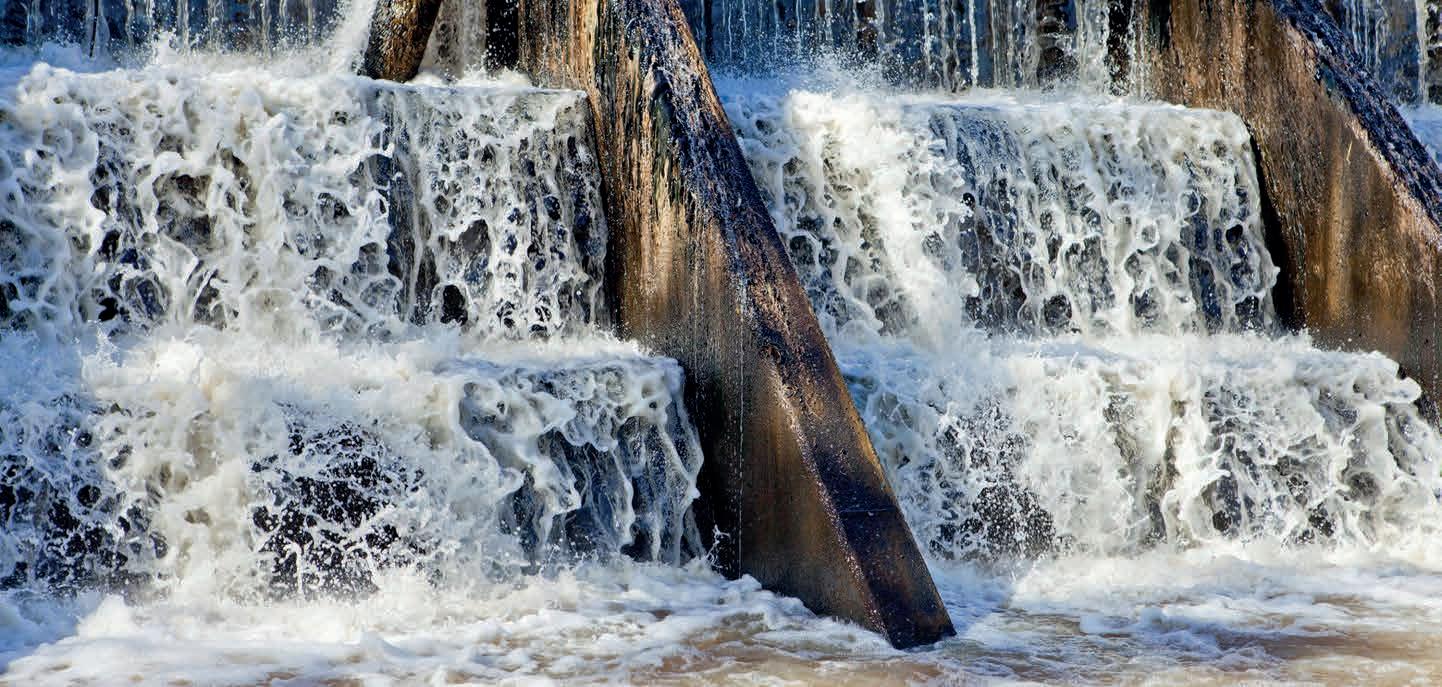
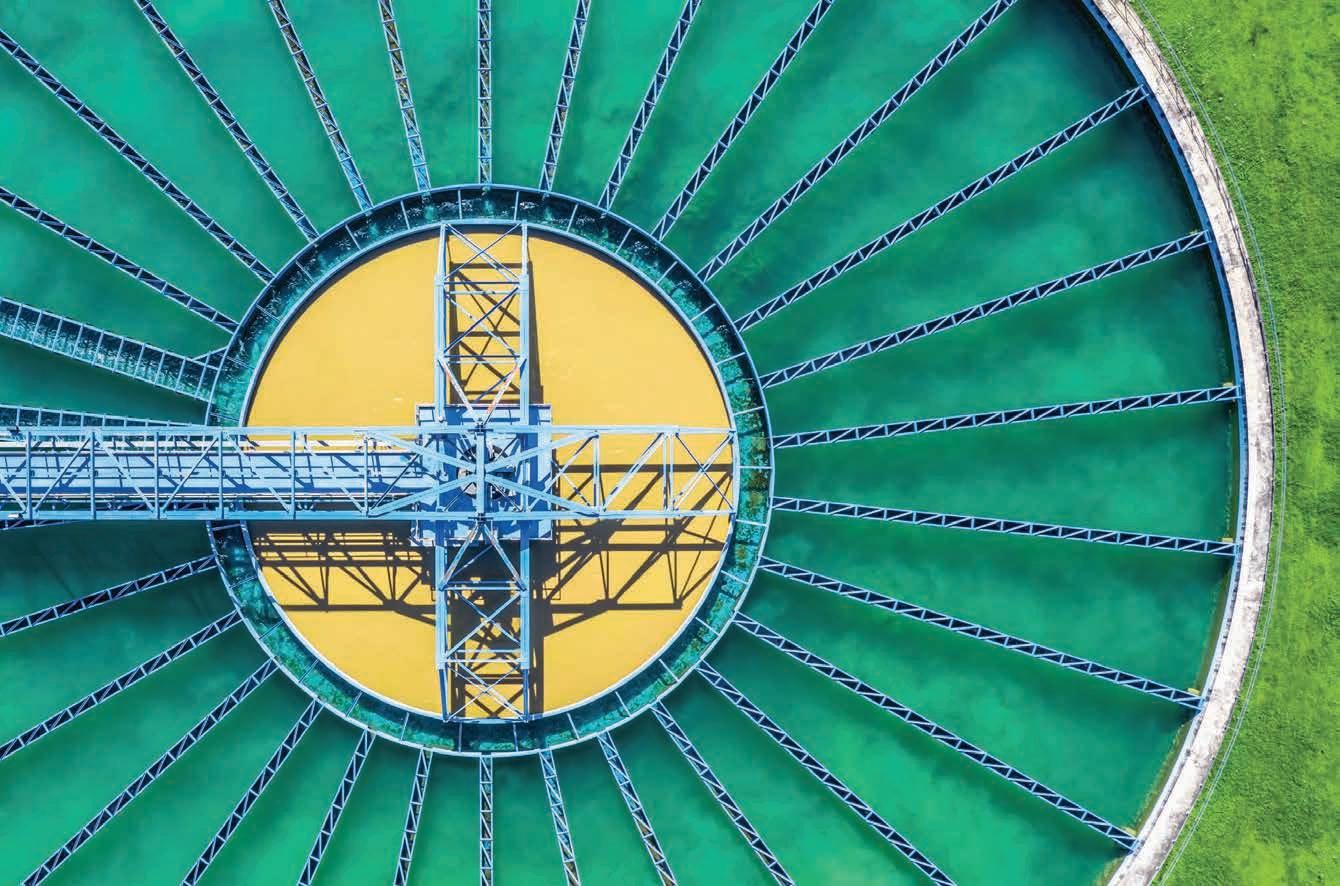

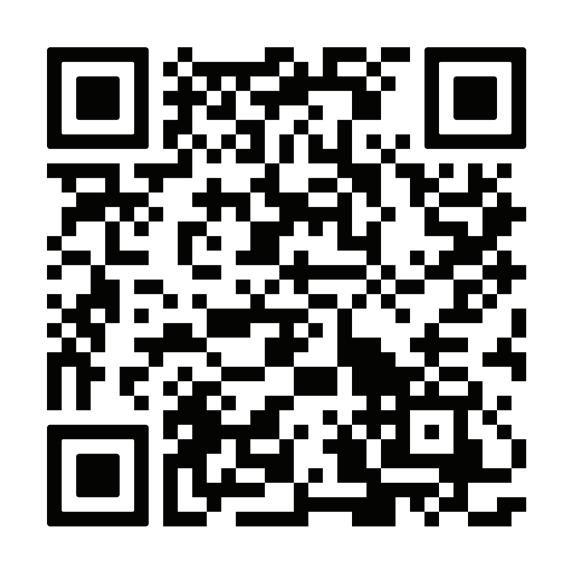
Sunwater captures, stores and delivers about 40 per cent of the water used commercially in Queensland. At its core, is its commitment to inclusivity in the workplace and opportunities to support its staff.
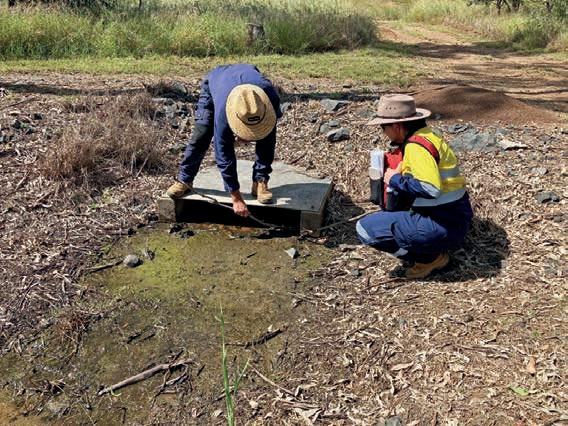
THE STRONG REGIONAL presence of Sunwater helps the company understand not just its customers’ needs but the differing needs of its staff. Its values include looking after people, working together, and taking responsibility for its actions.
Derived from its values is a culture that seeks to foster inclusiveness, encourage diversity, enhance employee engagement, and emphasise wellbeing for greater innovation and new ways of thinking.
Marie Fowler and Casey Macfarlane demonstrate how women in the water industry are supported and are representative of Sunwater’s drive for diversity and inclusion. They also speak to the opportunities for the industry going forward.
Fowler entered the water industry after a decade in customer serviceoriented roles while studying for her civil and environmental engineering degree. As part of her thesis, she completed her dissertation on utility hole relining techniques with Logan Water.
“It was very enlightening to lift the curtain on the water industry. Before joining, I didn’t know anything about
it,” she said. “I had no appreciation for the complexity, ingenuity, stakeholder engagement, technology and business management going on behind the scenes when moving water from one point to another.”
Macfarlane is still early in her Sunwater career, having joined the water planning team from university with a background in integrated water management and environmental engineering. Her interests lie in water and wastewater engineering, water resource management, and ecosystem restoration.
“My studies were weighted towards all aspects of the water cycle, with a strong focus on water and wastewater systems, and within my policy and planning work at Sunwater, an area of interest for me is people’s perceptions of water.”
Macfarlane emphasised the importance of the water industry continuing to support people from diverse backgrounds and groups and ensuring that consistent opportunities for career growth and development are made available to all.
“Unfortunately, the challenges faced by women in our industry
persist. While women are still underrepresented in the water industry, both in general and in senior and management roles, it is changing. Sunwater has successfully taken steps towards encouraging a more diverse workforce, embracing the idea that we can strengthen our team through authentic inclusion,” she said.
Macfarlane also noted that attracting and retaining talent in the industry may be a matter of those in the water industry showcasing their work and projects, making clear the variety of opportunity and depth of impact that the industry can have.

“Being able to show people all of the different facets of the water industry and the opportunities available would have a measurable positive impact,” she said. “We

are not just about drinking water, or pipes and sewage. We are so much more. We are the rivers and catchments and wetlands, the local creeks to the oceans, the farmers and producers and manufacturers, the urban green spaces and innercity ecosystems, water security in times of drought, and protection and management in times of extreme weather events.”
Macfarlane further added society is at a critical point in history in terms of the climate and finite resources, and while this is cause for concern, it is also cause for action. It is an exciting time to be a part of the industry, a time for problem-solving and innovation. The water industry provides a space for innovation, as well as an opportunity for passionate people to make a real impact.
Fowler supported Macfarlane’s thoughts by advocating for more education at all levels on the dynamic industry that is water.
“With women, we need to show them there are lots of opportunities to enter the industry through cadetships and graduate engineering programs. Once they enter the industry, we must provide them with strong mentoring and career development opportunities,” she said.
The role of mentors has been a vital part of the water industry’s supportive and collaborative environment. Both Fowler and Macfarlane spoke positively about their experiences with their mentors.
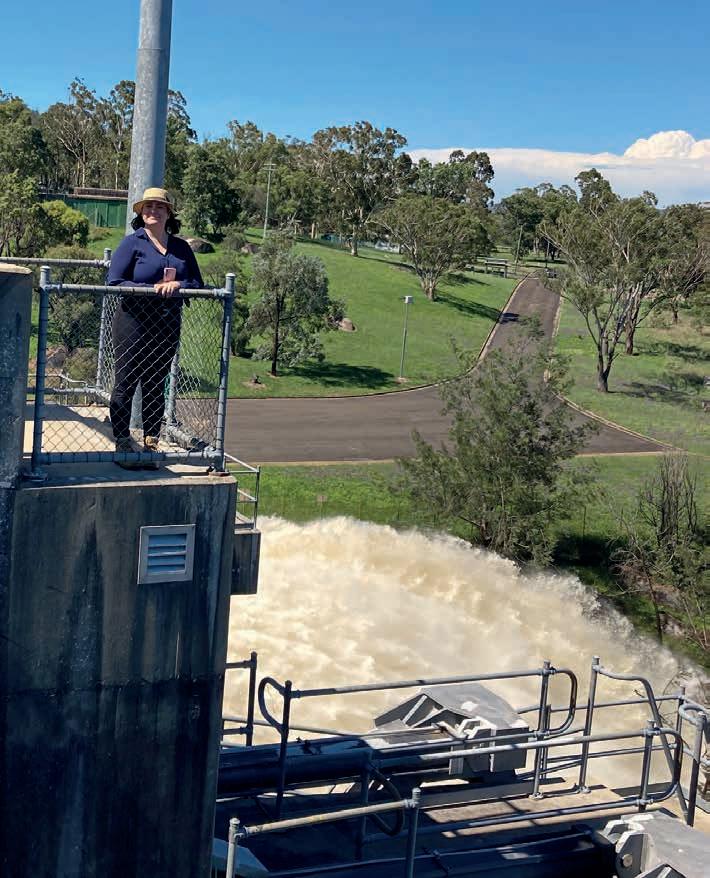

From Macfarlane’s perspective, her team leader was a fundamental role model, always advocating for learning and wider engagement in the industry.
“While at my previous role, I had a team leader who inspired me to continue my career in the water industry. The way that he spoke about the water industry, always
Fowler entered the water industry later in her career and sought a mentor to help her with its specific aspects. That mentor supported the development of the technical skills needed for her role, given her previous career experience.
“It was a fantastic way to learn, as I could see how they had worked through similar challenges,” she said. “It helped me work through problems. The best part of my mentorship was learning how to handle events and communicate with clients on-site, in the moment. Those interpersonal skills have guided me and, as a result, I have also started mentoring graduate engineers. That has helped me learn about myself, my career, and where I want to go. It’s a total lifecycle of
Fowler believes that the water industry is already heading down the right track when it comes to diversity
“While people may have differing viewpoints, we are all still able to have the conversation to get to the best solution,” she said. “Sunwater has a fantastically diverse environment, and I believe that having a lot of different opinions is the way forward. We’re definitely heading in the right direction as an industry.”
Macfarlane had a similar view, saying it will only get better. She believes it is just a matter of time before diversity and inclusiveness become par for the course.
“It will just take time for industries to catch up. Fortunately, there are organisations like Sunwater that are acknowledging the value of diversity and fast-tracking inclusiveness.”
For more information, visit www.sunwater.com.au
Working closely within their teams has been essential for both Fowler (right) and Macfarlane.
We have to educate women and show them they can be whatever they want to be in the water industry – and Sunwater is a great example of this.
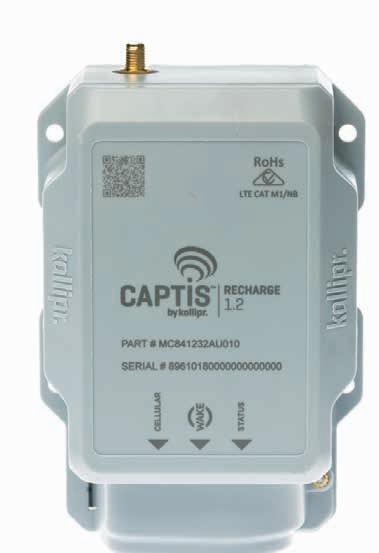
SUEZ knows that diversity is a strength. It is part of its daily life and territorial presence. For SUEZ, diversity among its teams is a genuine source of value creation, innovation and performance. It is why the company is committed to a diversity and inclusion policy that applies to all levels of the organisation.
SUEZ HAS WORKED to promote gender diversity at all levels. It is committed to increasing the number of women within its ranks this year and for years to come. Among the women within the company’s ranks are Nichole Perry - Head of Safety and Well-being, and Lisa ChanInnovation & Improvement Manager. Chan and Perry have had impacts while working in the water industry and for SUEZ. Chan was recently the winner of the 2022 Women in Innovation South Australia Award (Government), where she was acknowledged for her work with SA Water.
How they got into the water industry Chan has spent more than 25 years in the water industry after completing her Bachelor of Mechanical Engineering from the University of Western Australia in 1995. She took the opportunity to reflect on what she wanted to do in her career.
“I wanted to find a company I wanted to work for, that I could connect with, and that suited my values,” said Chan. “I was looking for something to keep me entertained and somewhere I could enjoy myself. While I didn’t know exactly what it was, I did know that I did not want to
Women at SUEZ Australia and New Zealand are driving significant impacts across all business units.
join the mining and resources industry. I had a strong environmental focus, starting from the 1990s.”
Through a stroke of good luck, Water Corporation in Western Australia started its graduate recruitment at the end of the year rather than earlier in the year, like most employers. At the time, they offered Chan a position in the field, working with operations and maintenance crews in an engineering support role. She got to work on maintaining the performance of Water Corporation’s water and wastewater assets. Since then, Chan has embraced diverse opportunities throughout her career in the water industry, which has taken her across Australia and internationally.
In Perry’s case, her career in health and safety started in the oil and gas industry. In a male-dominated field, she found herself in situations where support was not what was needed for women.

We need to create an environment where people feel safe and can feel like their true selves.
“ ”
“After returning to work three months after my son was born, the flexible work arrangements that were in place to support my return were withdrawn following a change in management,” Perry said. “There was no indication of why these arrangements were removed and certainly no performance justification for it.”
She explained that one Tuesday, she was to attend an interview on a Thursday for a vacancy in a different industry. Perry was provided with no information or reason for it and discovered that the interview was more of a meet and greet with the contract manager. It was here that she found her new job would be in the water industry, starting Monday.
“With nowhere to go and no one to turn to, I started the new role as an H&S professional in a different industry and enjoyed it. After four months, a request was made for me to go back to my previous industry to ‘help out’, but I declined. My current manager fully supported my decision to stay in the water industry, and I have never looked back,” said Perry.

Chan believes she has made an excellent decision to enter the water industry. She has found a meaningful career.
“There are two areas that are particularly important to me regarding a career. One is working with people that are also passionate about what they do. The other thing is focusing on the environment and sustainability,” she said. “I’ve always found my place in the water industry. Another great thing is that I have enjoyed diverse career options within the water industry. I’ve maintained a sense of being challenged and providing meaning and value to my work.”
SUEZ has supported women within its workforce, which Perry believes
water industry has been rewarding. Throughout my career, I’ve had General Managers who respected the H&S staff, including myself. They’ve elevated my profile and openly advocated for what I believe in. SUEZ actively promotes its Women in Leadership Programs to encourage women to develop their confidence in the workplace,” she said. Visibility of women in water vital
Perry and Chan believe in increasing the visibility of female engineers and women generally within the water industry. In her role, Perry believes promoting career opportunities that make a difference to the environment is vital.
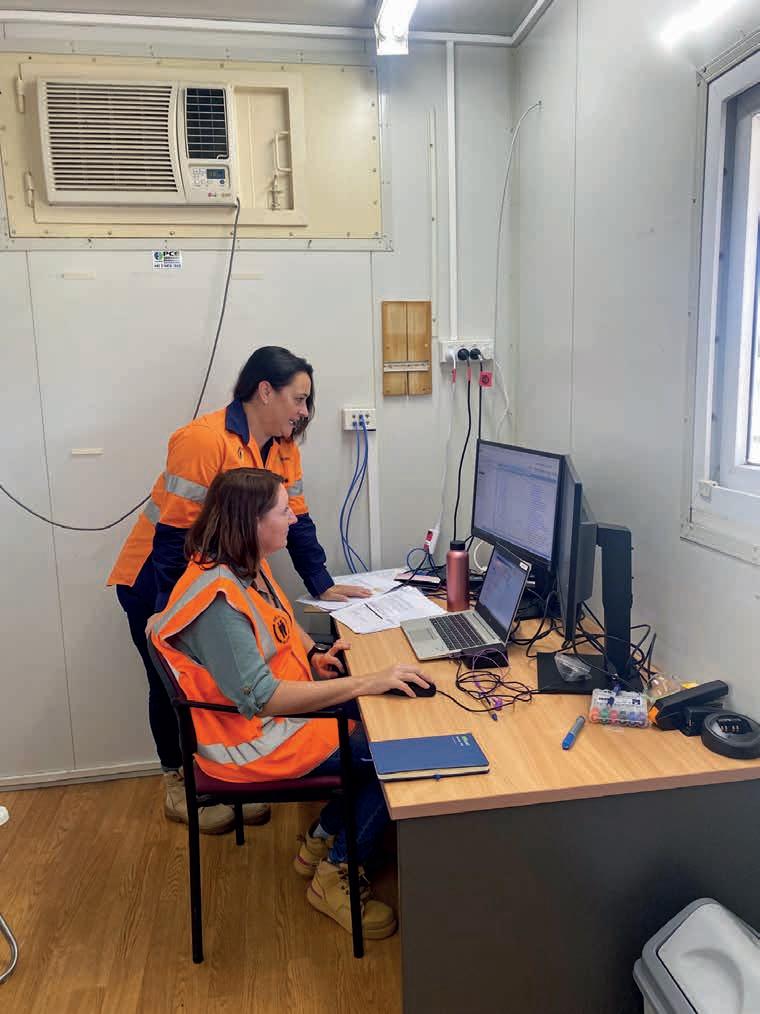
“We need to be able to contribute to the future of our resources through emotional intelligence,” she said. “Women in the workplace are better equipped to identify and regulate their emotions and understand the emotions the others. Therefore, they can influence others through building relationships, reducing team stress, defusing conflict, and improving job satisfaction for everyone.”
Similarly, Chan focuses on having female engineers and leaders visible as much as possible.
“It’s important to have those female leaders and engineers provide a supportive framework
critical for new engineers entering the water industry for female participation and every inclusivity group. There should be no barriers preventing people from being their best.”
Women making a difference for the future
Perry is convinced that role models and mentoring are essential when looking into the future.
“That’s been my motivation in the water industry – to become a female H&S leader and openly encourage and mentor other females in the industry,” she said. “To me, having open discussions with others about their ambitions and career goals contributes to a woman’s leadership development. Both males and females have reported to me in my career, and all are treated equally. Everyone feels safe to discuss what they need from the business and how the business can support their aspirations of becoming an H&S leader.”
Chan focused on the importance of a diverse range of opinions.
“Everybody has their perspective and unique ability to bring something to the table. Having more women in the industry and other diverse points of view will only contribute to us making things better in the future,” she said.
For more information, visit www.suez.com



The EZIpit® is your easy-to-use modular plastic pit solution. Available in a range of sizes, you can now access a complete solution of gravity sewer pits for your next pipeline project.
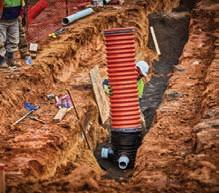
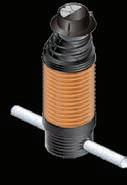

TOUGH AND DURABLE
Proven performance in Australian sewers

FAST, SAFE AND EASY TO INTALL
Lightweight components reduce heavy lift requirements


WSAA appraised and complies to WSA137
The Iplex EZIpit® range offers flexibility and choice for specifiers and installers.
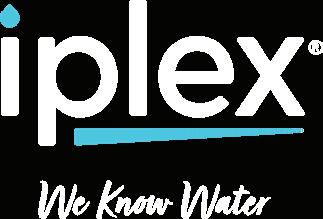
With numerous base flow channel configurations, integrated swivel sockets and a range of GATIC® cover options, the EZIpit® is designed for speed and simplicity.
If you would like to learn more about the EZIpit®, request a presentation, or download the EZIpit® Technical Guide, please scan the QR code below or visit uqr.to/ezipit.
SCAN THE QR CODE TO LEARN MORE

Social justice advocate Marian Wright Edelman invoked a strong and memorable phrase when describing the power of role models in improving representation: “You can’t be what you can’t see.”
THERE’S A SAYING in the professional world that suggests you can’t be what you can’t see. For many early career professionals, this can be a barrier to entering certain roles and industries. However, for GHD’s Maritsa Kacopieros, she’s had an inspiring and empowering role model in Lindsey Brown, GHD’s Australian Market Leader – Water.

The two crossed paths early in Kacopieros’ career while volunteering at an Australian Water Association tree-planting day. At the time, Brown was President of the Association’s Victoria Branch, and Kacopieros was looking to network with other water industry professionals having just moved to Melbourne.
“To say I was inspired by Lindsey would be an understatement,” Kacopieros said. “I knew I wanted to be mentored by her.”
Connected by a strong sense of commitment
Throughout their careers, giving back to the community and working with purpose is something that’s connected them both.
“Whether it’s been through our volunteer work with WaterAid or the Australian Water Association, that commitment to making a positive contribution is something that we share,” said Brown. That commitment is also shared by those working across the water sector, and it was a big reason for Kacopieros joining the industry in the first place.
“The water industry is so special because people have a strong sense of contribution. We all want to serve our communities as best as we can and make the world a better place for future generations,” Kacopieros said.
While Brown’s journey into the
Kacopieros and Brown together for the annual Walk for Water, by WaterAid.
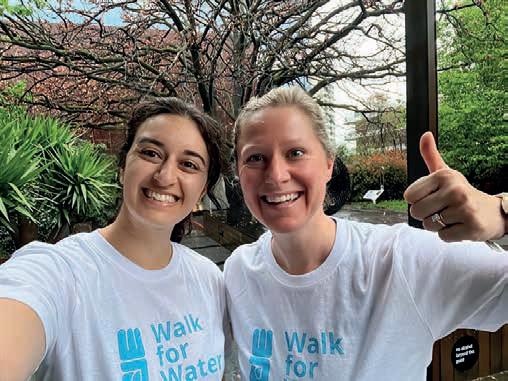
water industry was not your typical career path, her experience in the public and private sectors has given her a deep understanding of the positive impact both can have on our communities.
“Having first worked in the Canadian public service and mining industries before moving into water and sustainability roles in Australia, the thing that always guided me was wanting to make a difference. I feel like the water industry is one of the best places to do that,” said Brown.
A close mentoring relationship with mutual benefit

Kacopieros and Brown’s paths crossed again when Brown joined GHD in 2019.
“I was so excited because I had just rejoined GHD a few months prior and was looking forward to actually being able to work with Lindsey,” said Kacopieros.
Since then, the two have had a close relationship which has proved valuable to them both in unique ways.
“Having a female mentor who’s taken a bit of a different pathway and has all these great perspectives has helped me professionally and personally,” Kacopieros said. “I feel
like I always take something from my conversations with Lindsey, something I might not have thought of or a different way of framing things which I’ve always found helpful.”
“And it’s a two-way relationship,” Brown adds. “It’s been so valuable for me to talk to Kacopieros about what’s going on in some of the delivery aspects of the business that I’m not as close to anymore or to get a sense of a particular project and how everyone involved is feeling about it.”
Through their career discussions, Brown identified an opportunity for Kacopieros to progress in her career.
“Given my role, I had visibility to some opportunities that were
opening in other regions. Knowing Maritsa’s career aspirations, I was able to connect some dots. I could see that for somebody with her drive, passion and skills, this role in Canberra would be a great fit for her, so we talked about that and what it might look like,” said Brown.
With females only making up about 30% of leadership in the water sector, both Brown and Kacopieros are strong advocates for connecting and supporting women in water, particularly through initiatives like GHD’s STEM Pathways Program for
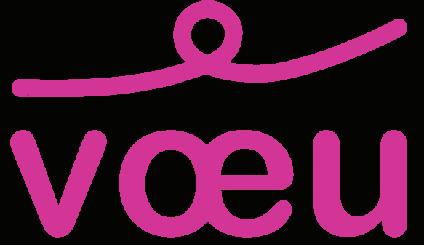
female high-school students and the Women in GHD (WinG) network.
“It’s incredibly inspiring to see how mutually supportive and connected women are across the sector. We’re all very committed to helping women have great careers in water. For many of our young graduates, I know it makes a big difference to see women at different career stages that they can aspire to. We reap a lot of benefit and joy because we have great women in our business who do amazing things,” Brown said.
“As someone trying to figure out if I want to have kids and how I balance that with my career aspirations, it’s been important to have a female role model like Lindsey, who is very transparent about the realities of having a family and a career. It may not always be pretty, and that’s okay,” said Kacopieros.
Brown said the key is to be real and share your experiences because those are the stories from which other women can draw.
“I’ve had conversations with women about how they want to step up into different roles, but they don’t think they can because they find travel difficult. And I ask them, ‘well, how can the business support you, and what would you need to make that possible?’ That’s what practical accommodation looks like,” she said.
“I remember when I was only five months into my role at GHD and had to travel to a technical conference in New Zealand. My husband was also travelling, so he couldn’t be at home with our kids, and I had a less-than-one-year-old that I couldn’t leave with anyone. I said, ‘I can go, but I need my nanny to come with me because I don’t have childcare for my youngest’. And GHD paid for my nanny’s flight to come with me so I could be a mum without compromising my career,” Brown said.
Workplaces leading the way
With targets of 25 per cent female representation in senior leadership roles and 40 per cent in its emerging leaders’ group, GHD has introduced new measures to ensure pay equity, been accredited as a Breastfeeding Friendly Workplace and renewed its annual Career Relaunch Program
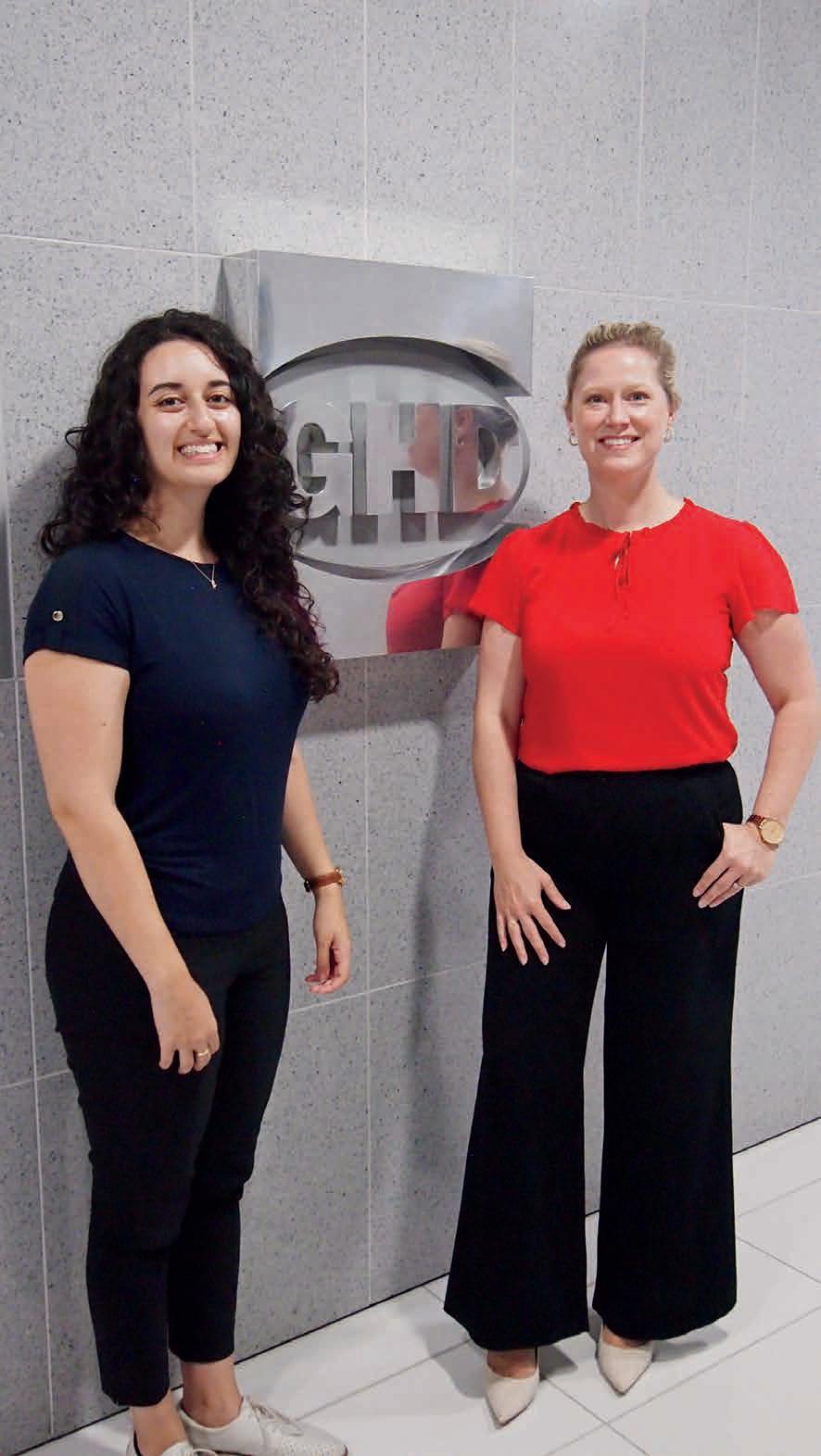

women they belong, have a place, and can be themselves,” Brown said. There is an excellent network of women who are lifting each other up and demonstrating that you can have a fulfilling and successful career in the water sector.
To learn more, visit www.ghd.com/FutureofWater
and

Detection early adopter Dr Bernadette Proemse was among a group of female water and environmental professionals who are now Fellows of the Peter Cullen Water and Environment Trust.
“IT’S A BIG privilege to be a Peter Cullen Fellow. I’ve been on an exciting and encouraging journey. It’s beyond anything I could have imagined to be part of this leadership program, and I feel honoured to have graduated to become a Peter Cullen Fellow now.”
So said Dr Bernadette Proemse, Catchment Scientist at the not-forprofit organisation, the Derwent Estuary Program, a regional partnership of local councils, industries, researchers, and the Tasmanian State Government. The Derwent Estuary Program monitors and reports on the environmental health of the Derwent, a river and estuary with a catchment covering one-sixth of Tasmania’s land mass and providing 60 per cent of the drinking water to approximately 40 per cent of Tasmania’s population.
Her current work focuses on nutrient cycling in freshwater systems using revolutionary real-time analyser technology. Proemse is interested in hydrology, catchment
science, and anything related to stable isotopes. Her research encompasses the development of novel analytical and isotopic tools and their application in environmental biogeochemistry, including pollution tracing.
“My career has been very diverse. I’ve dived into different areas over the last 15 years,” she said. “They tend to swing back and forth between water quality and air quality-related research. My background in isotope geochemistry has allowed me to investigate various environments and samples, from ancient ice to modern sediment cores.”
In November last year, she joined a group of 13 professionals working in water and environment organisations from all over Australia. Together, they aim to change current environmental systems and processes to improve Australia’s environmental outcomes for future generations. All these professional women were made Fellows of the Peter Cullen Water and Environment Trust.
Dr Bernadette Proemse has worked tirelessly at sites like this Eco Detection one at Meadowbank Vineyard.
Proemse has been working with Melbourne-based company Eco Detection to monitor water quality in real time. Seven water quality monitoring systems are now operating in the River Derwent Catchment, including at a TasWater sewage treatment plant, and are closing the gap between data and insight.

“We are pleased to see our Eco Detection nutrient monitoring units installed,” she said. “We have recently seen some early warning signs in the upper estuary hinting at nutrient increase, and we are keen to investigate the sources of these nutrients in the River Derwent catchment.”
This world-first automated electrophoresis-based solution is designed to increase efficiency in infrastructure, remote operations, wastewater processing, food production and environmental monitoring. From Proemse’s perspective, the volume of data provides immense opportunities.
“We are halfway through a three-year project funded by our stakeholders and The Ian Potter Foundation,” she said. “It’s fascinating because of the novel technology we are using. I love using analytical
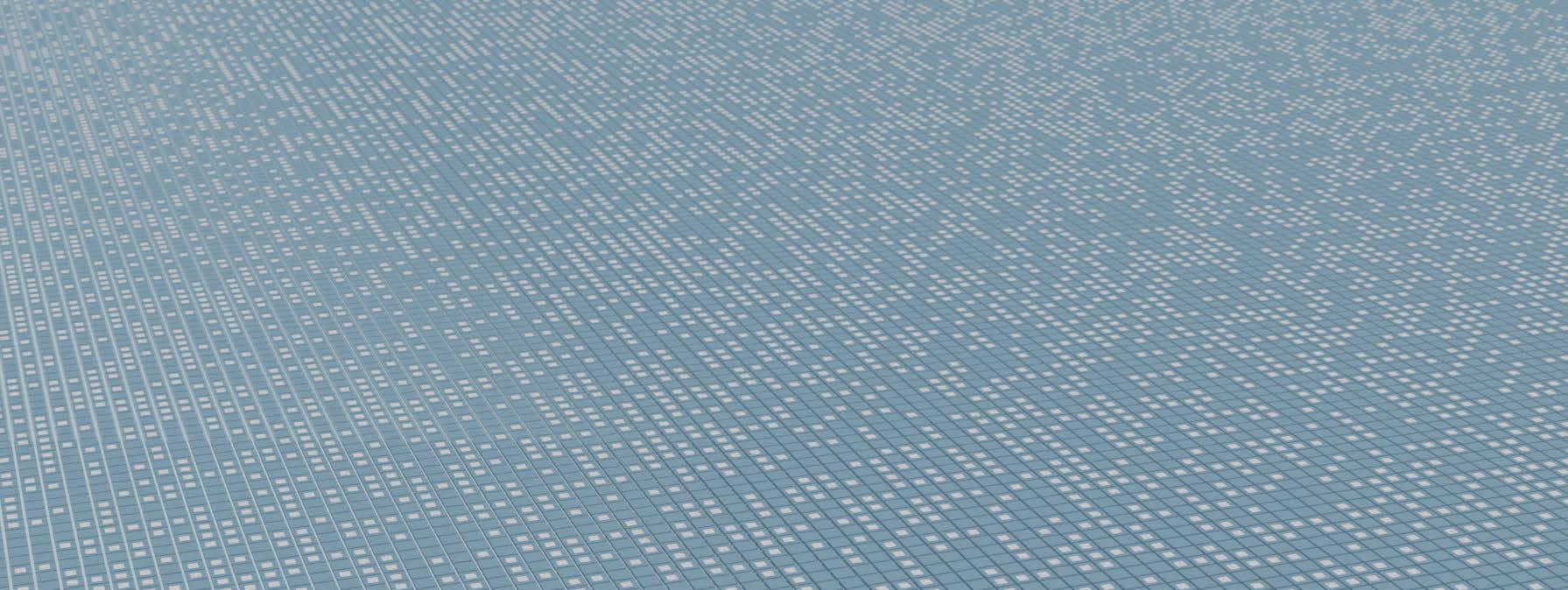
equipment like mass spectrometers, ion chromatography, and capillary electrophoresis systems.”
Proemse enjoys seeing how the equipment can be utilised in realworld environments by taking these complex instruments into the field.
“This technology has been developed by the University of Tasmania, taken to the mainland for engineering and commercialisation, and then returned to Tasmania for the first catchment trial,” she said. “My challenge is to take the thousands of data points and unravel what is happening in our rivers and streams. My other task is to finetune and improve the equipment while it is on site.”

How can companies best use this technology?

Eco Detection’s systems are proving valuable insights to customers in environmental monitoring. The realtime data generated by the platform gives a window into the dynamic nature of river systems. Proemse believes that many organisations could take advantage of this technology.


“Eco Detection is providing fantastic support to our project so we can get the data we need in
near real-time, analyse it, and get it out to our stakeholders,” she said.
“That way, they can make fast and informed decisions. With the data being streamed to the cloud, we can access the data from anywhere. It’s reducing the data gap from weeks to hours. We are getting high-quality data to share with stakeholders and industry partners.”
Automated sampling and laboratory-grade measurements are also being used to supplement or replace existing sampling practices
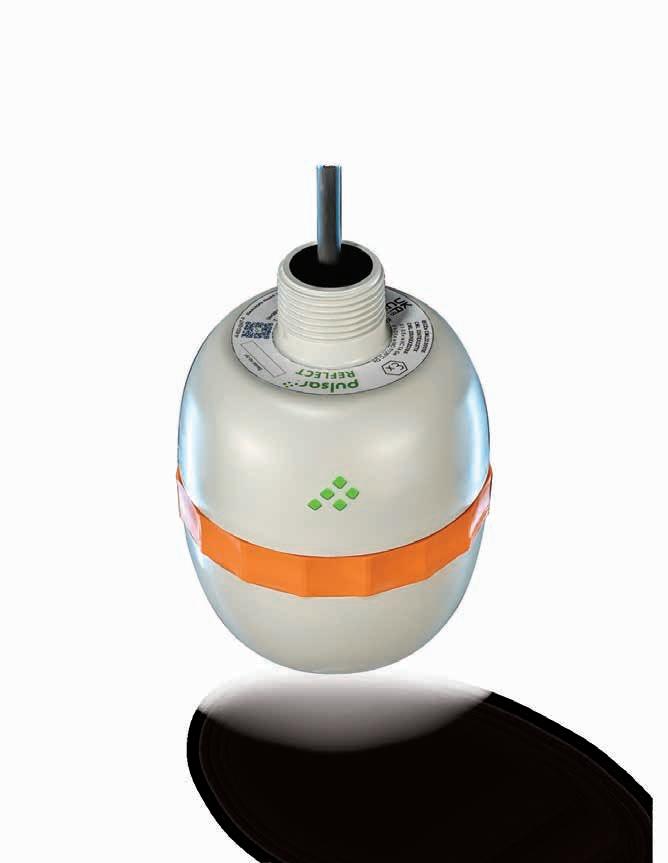
in wastewater treatment plants. The need for weekly or daily water sample testing is expensive while needing more granular detail. Eco Detection’s integrated system automates water testing, analysis and reporting to provide real-time laboratory-grade data. It enables proactive decision-making to meet sustainability and compliance standards and improve efficiency.
“While the validation phase of the project is still underway, we are already getting trickles of good news. The support of The Ian Potter Foundation has been vital in helping us get the analysers and test them in various environments. We are testing them at different nutrient concentrations from very high to very low,” said Proemse.
She explained that taking monthly control data ensures that the analysers work correctly. This is the
first big field trial of the technology. Proemse’s research is trying to cover different scenarios and challenges while ensuring high-quality data.
“We are working with the Environmental Protection Authority (EPA) to show that this technology can be used for compliance monitoring,” she said. “We are also collaborating closely with TasWater to help understand the variability of nutrient levels in their sewage plants. By having remote access to the analysers, we can adjust them to account for extreme weather events, the use of consumables in the devices, or any number of other issues that we might have to deal with.”
When it comes to opportunities for women in the water industry, the Peter Cullen Water and
Environment Trust is at the forefront of bridging science, people, and the environment. Of note is its Women in Water Leadership Program. The Program offers a bespoke approach to women’s water and environmental management leadership.
When Proemse was elected with 12 other women as a Fellow of the Trust in November 2022, she joined a strong and growing national network of inspiring, inspired, engaged, and committed leaders across Australia working together for a healthier planet.

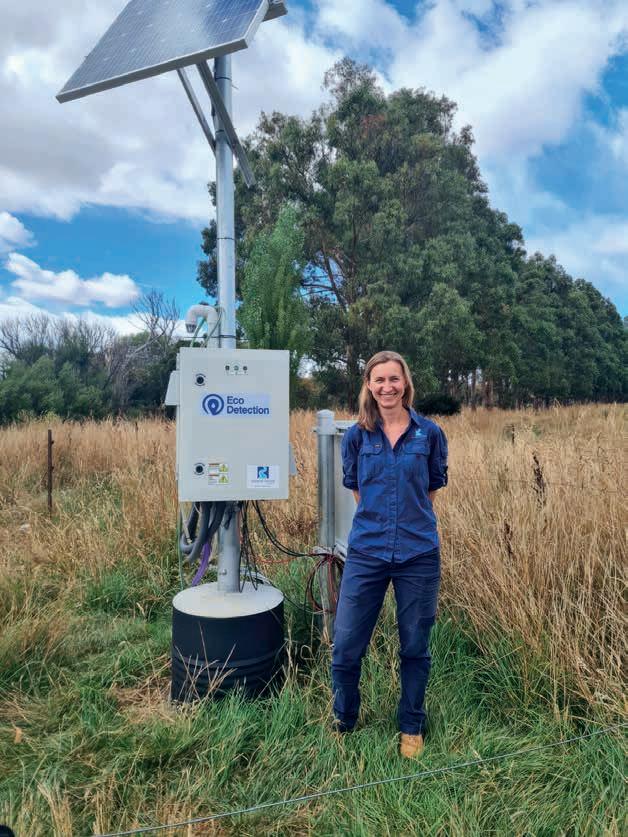
“It’s extremely empowering,” she said. “It’s been encouraging to step up as a leader and to have the confidence to make the tough calls. That’s what is required to look after the environment. Listening to Tanya Plibersek, I feel I fit into her ambitions of providing better data. That’s where my project fits in. The Peter Cullen Trust aims to bring forward leaders that can communicate difficult decisions for society and have the right evidence to substantiate those decisions as well as helping people understand the need for changing behaviours.”
For more information, visit ecodetection.com
“ ” Sunwater developing infrastructure We are are where supported.
you positive and for workplace Sunwater. To
Creating prosperous futures for all
Creating prosperous futures for all
Sunwater has a proud history of developing and managing bulk water infrastructure throughout Queensland. believe that diversity and inclusion essential to our success, and we committed to creating a workplace where all employees feel valued and supported.
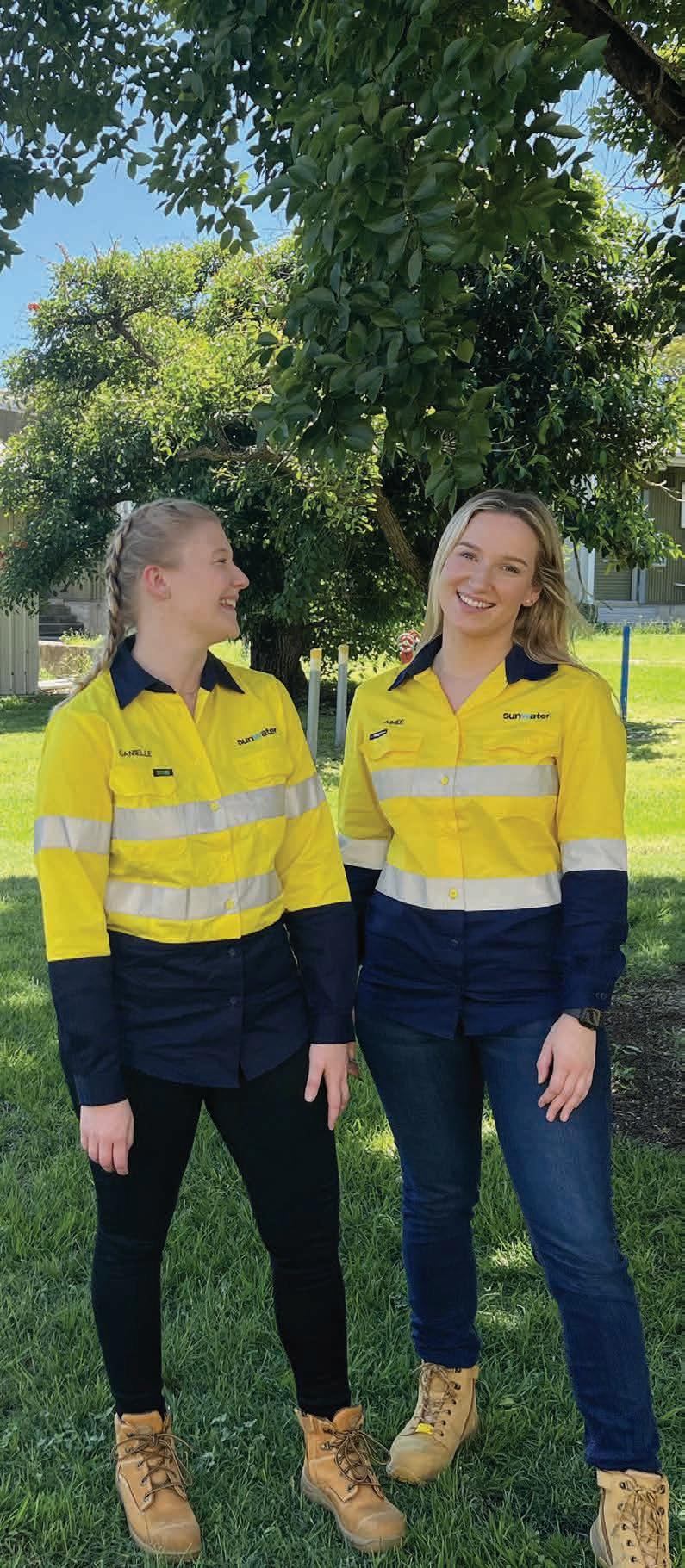

Sunwater has a proud history of developing and managing bulk water infrastructure throughout Queensland.
We believe that diversity and inclusion are essential to our success, and we are committed to creating a workplace where all employees feel valued and supported.
you are passionate about making a positive impact on the environment and your community, and are looking a dynamic and supportive workplace consider a career with Sunwater. learn more visit: sunwater.com.au/careers or scan the QR code below.

If you are passionate about making a positive impact on the environment and your community, and are looking for a dynamic and supportive workplace consider a career with Sunwater. To learn more visit: sunwater.com.au/careers or scan the QR code below.

Voeu is a water sector commercial advisory consulting practice. Its cutting-edge industry research has unveiled interesting correlations between diversity and productivity.
VOEU’S INVESTMENTS IN water industry research have strengthened its position as a provider of specialist services for this market. This investment is aligned with Voeu’s core areas of expertise: commercial consulting, industry research, and board advisory.
One of Voeu’s key research projects is the Five Streams Project. It sets out to analyse and profile assets across the water sector. This research aims to deliver insights for organisational benchmarking and decision-making. It can also be used as a foundation for investment in innovation, technology, and resources to drive the growth of the water sector. The research focuses on asset identification, operational
performance, and financial indicators. The industry research will be divided into five streams: wastewater, potable water, recycled water, stormwater, and drainage culverts.
The goal is to provide a holistic perspective on the industry. It uses new information to complement existing data from government agencies, regulatory bodies, and industry associations.
This project offers critical benefits for stakeholders in the water sector. The analysis will provide a detailed understanding of the industry, including identifying strengths and areas for improvement. This information will be helpful for organisations looking to optimise their operations and improve performance.
Voeu’s research into gender diversity
Phase one of the research uncovered an unexpected insight into gender diversity across councils and water authorities. Jason Marshall, Managing Director and Principal Consultant, tasked his team with getting the contact details of every mayor, chairperson, CEO, general manager, and asset leader of all the councils and water authorities around Australia and New Zealand. As a result of collecting that information, Voeu could determine the gender diversity of senior leadership roles within councils and water authorities across the region.
Victoria leads the sector with the largest number and proportion of women in leadership positions in local councils and water authorities. Eighty-eight women are employed in different leadership positions, representing over one-third of all these roles.
However, more issues are at play when gender diversity levels are examined in the context of the total number of positions available. The most common place for women to find a senior leadership position is as a local council mayor, with females occupying 28 per cent of around 620 available roles.
Water authorities tend to be more diverse in leadership roles. Of the 45 board positions available at water authorities, 31 per cent have a female as the Chair, with Victoria having an overwhelming majority of women as the chairperson. However, it is less than ideal that only 20 per cent of water authorities across Australia and New Zealand have a female CEO or General Manager leading the organisation. In several states, there needs to be more female representation at this level.

It must be noted that comparing the numbers between local councils and water authorities is more challenging. There are far more local councils in Australia than water authorities, so there is more chance that women are likely to be hired for such a position.
However, the comparative data is clear. It does show that water authorities are generally more likely to appoint a female leader than local councils on a proportional basis. A higher percentage of women in more senior roles provides evidence of a ‘broken rung’ where women in entry-level positions are promoted to managerial positions at much lower rates than men. An alternative view may be that fewer females across an organisation feed into progressively more senior leadership roles.
What does having more women mean for a company?
Research published in Harvard Business Review suggested that gender diversity relates to more productive companies, measured by market value and revenue. However, this only occurs when gender diversity is viewed as “normatively” accepted or a widespread cultural belief that gender diversity is essential.
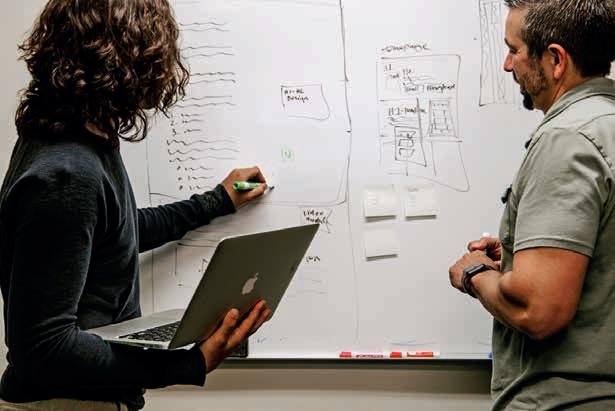
“We found that the percentage of women in telecommunication companies in Western Europe, historically a relatively gender-
Less than 20 per cent of chief executive officers and general managers in local councils are female. It’s even worse when it comes to asset leaders — there are about 11 per cent represented by females.
inclusive context, was significantly tied to a company’s market value,” said Letian Zhang, the paper’s author.
The positive effects of diversity in societies with normative acceptance of working women are not reflected in communities with only regulatory support. While regulatory approval of working women is correlated with normative acceptance, they are not the same. Some countries have culturally solid support but few legal structures in place. Others have established legal systems but cultures that are strongly male-dominant.
“Take Japan. It has some of the most generous parental leave policies [yet] stiffly patriarchal work cultures. We found that countries like Japan do not benefit as much from gender diversity compared with firms in Western Europe that have more cultural acceptance,” Zhang said.
Therefore, workplace culture is so critical. A diverse workplace has a broader collection of backgrounds, viewpoints, and life experiences, resulting in a more well-rounded decision-making process. Creating equal opportunities for men and women to collaborate on decisions also leads to diminished risk-taking, less aggressive strategies and improved workplace satisfaction and employee turnover rates.
How this relates to Voeu
Voeu understands the importance of operational efficiency across all five streams of the water sector. While many might think about Voeu in terms of studying physical assets, it understands that any organisation has many types of physical and
non-physical resources to consider. Future operational performance benchmarking incorporates an analysis of gender diversity within the enterprise against productivity metrics to give valuable insights into the correlation between gender diversity and productivity.
To solve the broken first-rung challenge, the sector also needs to actively promote women into the lower tiers of the leadership ladder.
Voeu takes a holistic approach to improve client productivity and operational efficiencies by considering all resources, especially the organisation’s diversity. The more this is done, the better any organisation can perform.
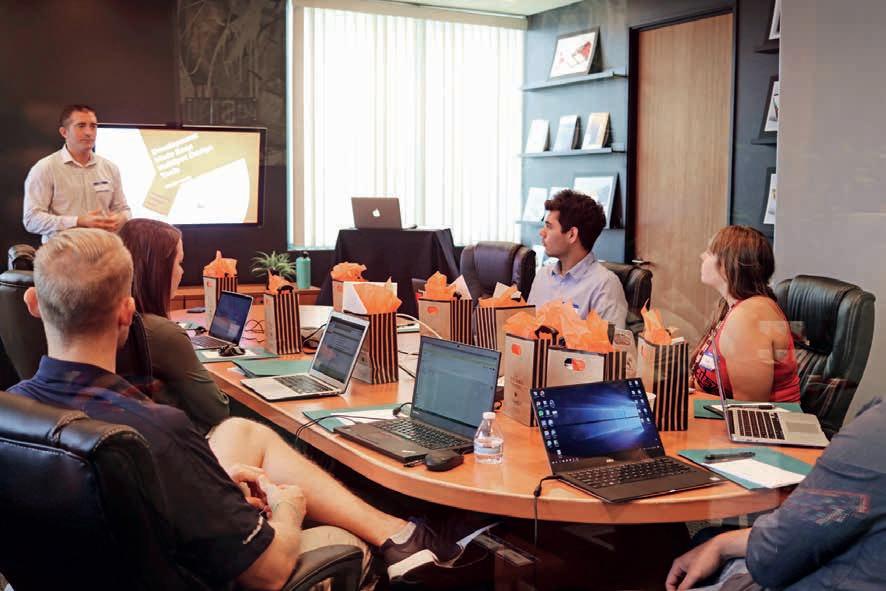
Voeu is a specialist water sector advisory and consulting practice that delivers advice and improvement projects for infrastructure owners, operators, and delivery providers.
To find out more about Voeu, visit www.voeu.com.au
The water industry is a leader when it comes to diversity and inclusiveness.
Hydroflux
“OUR MAIN GOAL was and remains to be part of the conversation around reversing the impacts of climate change. Everything we do here contributes to a healthier planet and communities. It was important for us to make that contribution.”
These are the words of Hydroflux chairman and co-founder John Koumoukelis. Working with fellow co-founders Andrew Miley and Adrian Minshull, the triumvirate of water experts have nearly 100 years of experience and passion in the water industry.
In talking to them, it is clear that Hydroflux is no ordinary water
make
difference in sustainability and climate change. Its trio of founders have worked tirelessly to achieve their goals and are pursuing future progress.
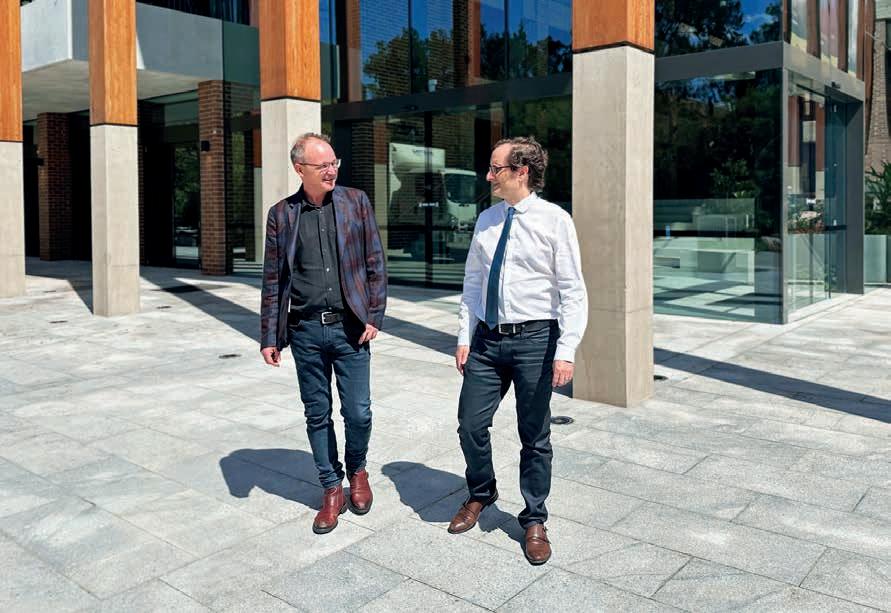
business. From the beginning, Koumoukelis, Miley and Minshull have worked to build and develop a privately owned Australian water company that makes a difference in the fight against climate change. Having known each other since the 1990s, the three wanted to continue working together with the same mindset and focus on the projects they wanted to work on.
“We wanted to build a lot more than we had in the past. That meant getting into the design and construction of bioenergy plants, sludge drying, nutrient removal, remediation, and removing emerging
pollutants. These are all things we hadn’t previously done a lot of in the past. That’s what we wanted to get into,” said Miley.
What is unique about Hydroflux? When they set up Hydroflux, the cofounders understood that different sectors had different needs. While there would be some carry-over across some sectors, individual clients would have specific needs unique to their industries.
“We have multiple businesses under the Hydroflux group of companies that are market-based,” said Koumoukelis. “Hydroflux Epco is dedicated to the municipal sector, representing potable water and sewage for towns, cities, resorts, or mining camps. Hydroflux Industrial manages water and wastewater associated with industries. That includes food, beverage, mining operations, pulp and paper, tunnelling, infrastructure, and manufacturing. Hydroflux Utilities focuses on aftermarket customer services, providing long-term support, service, and consumables where necessary.”
In addition, Cress Consulting offers a comprehensive range of sustainability consulting and advisory services to assist businesses in achieving a more sustainable and secure future, such as ESG, carbon accounting, decarbonisation strategies, climate risk assessments and water stewardship programs. Each of these arms of Hydroflux has offices in Australia, New Zealand, and the Pacific run by local staff and local directors. Having locals operating their branches is a crucial point of difference for Hydroflux.
“Stuart Petersen was born and bred in Fiji. He runs our Pacific office and is a very hands-on person. We do significant work in Fiji, engaging local contractors whom
was born out of a desire to
a
we have partnered with for years. Understanding those local dynamics has been easy with the right people in place,” said Koumoukelis.
Paul Cobbin was another lead identified as an essential player in the Pacific Region. Cobbin has been working in Papua New Guinea for 30 years and mentoring young engineers from around the region. He’s since become CEO of Hydroflux Pacific. In the eyes of the founders, it builds on the positive relationships they have formed in the region over that time.
“We see gender balance at all levels as something we strive for as we believe it’s good for our people, clients and business,” said Miley.
Hydroflux is proud of creating proprietary IP every year. That has come from understanding its clients within individual market sectors and developing solutions specifically for those customers. As part of the development of their IP, Hydroflux has developed exclusive partnerships with some of the world’s best businesses in a range of fields.
“There are about 15 partners worldwide that we are working with across several spaces,” said
excited about is the bioenergy business. It’s growing dramatically, and we are working with multiple partners around Europe because no one company has the complete solution. We can collaborate, providing different expertise to solve problems.”
“Hydroflux Epco customers tend to be water engineers that have a detailed understanding of what we offer,” said Koumoukelis. “Hydroflux Industrial customers are more
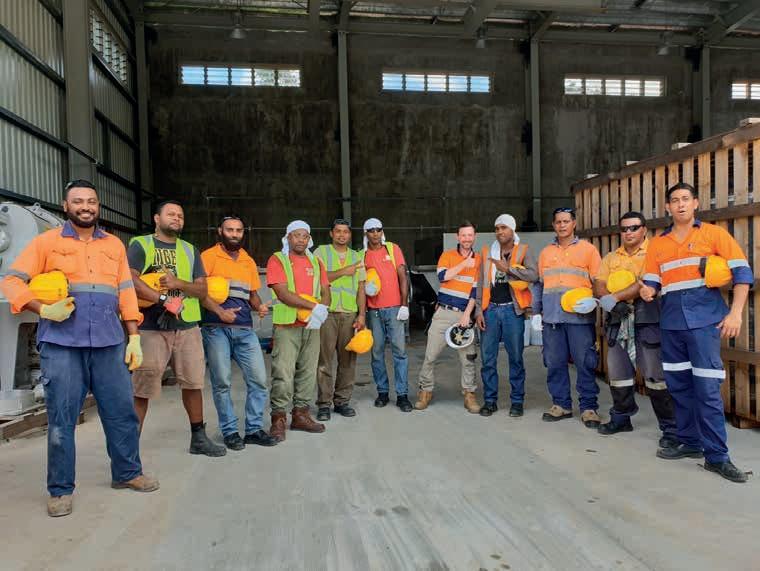
gww.com.au/careers

We aim to be as diverse as the communities we serve, and with that comes the respect and support you need to thrive.
If you’d like to make a difference and work in a supportive and collaborative workplace, jump on our careers page to explore the opportunities.(fifth from right) with local staff at the Hydroflux Fiji office.
focused on their specific industries.
“The biggest difference between Epco and Industrial customers is that industrial customers want the problem solved,” said Miley. “They are not particularly fussed about how the problem is solved; they want it solved. It’s a very different project management method from our Epco customers.”
As part of its vision and mission, Hydroflux has always taken its climate responsibility seriously. In 2022, Hydroflux became Australia’s first water treatment and technology company to achieve Climate Active carbon neutral certification for its organisation and its products. It knows that partnering with customers and clients is the most significant impact it can have in its journey.

Each stage of the product lifecycle has been assessed to ensure its products and services are climate safe. It involved a review of carbon emissions, identifying carbon reduction opportunities and a longterm commitment to addressing climate change challenges. To achieve this goal, there was engagement with their employees, which has led to significant positive change.
“Engaging and communicating with our staff gave them another spring
in their step. It made the staff realise that we are serious about climate change,” said Koumoukelis. The engagement has seen several changes in behaviour and practice. The teams across Hydroflux have provided fantastic input and many ideas to improve and ensure the company keeps sustainability in mind.
“This is evidenced by our coffee pod and office recycling program through to the establishment of a cross-functional diverse internal team focused on improving the sustainability of everything we deliver. Being carbon-neutral is a great starting point in that process,” said Miley.

The future of Hydroflux
Koumoukelis and Miley are excited about the future of Hydroflux and
Having a female CEO and CFO is another point of difference that impacts Hydroflux’s ability to recruit more women into the business. With Julia Seddon as the CEO, Hydroflux shows they are serious about diversity and inclusion.
we have.
the impact it will have by striving for its sustainability and climate change goals. Another area that particularly motivates them is the shift in the mentality of their clients.
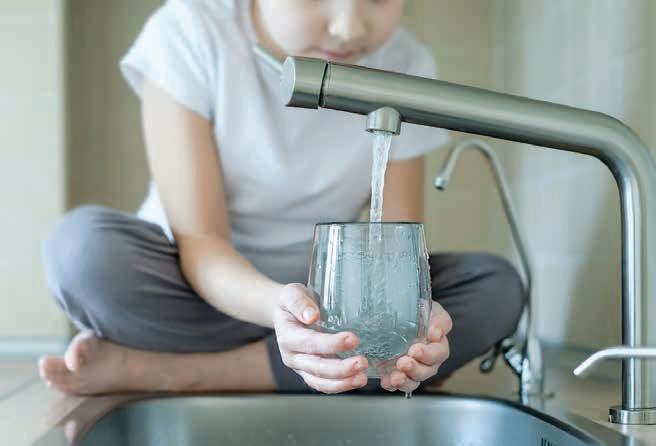
“Many of our clients embrace resiliency as part of their business planning, both in the private and public sectors. It’s great to be part of that conversation and leading to expanded capabilities in terms of bioenergy, renewable energy, water reuse, and protecting natural waterways,” said Koumoukelis.
Miley is enthused about the growth throughout the Pacific region. Hydroflux works with 28 water authorities throughout the region and is now involved in various bioenergy projects. He believes that is a massive opportunity.
“The other side is that we love seeing a new generation of water engineers being developed at Hydroflux,” said Koumoukelis. “It’s great to see where the graduates wind up in ten years. It’s always a joy to see them take control of a project, make a difference, and grow in their career path. I’m excited to see the next generation of water engineers come through. We’ve mentored them and done everything possible to support them. It’s always rewarding seeing people grow professionally in this space.”
For more information, visit www.hydroflux.au
Water is a scarce resource for everyone, and Hydroflux understands the importance of looking after what
The engagement from staff has been outstanding. It made people love coming to work here.
”


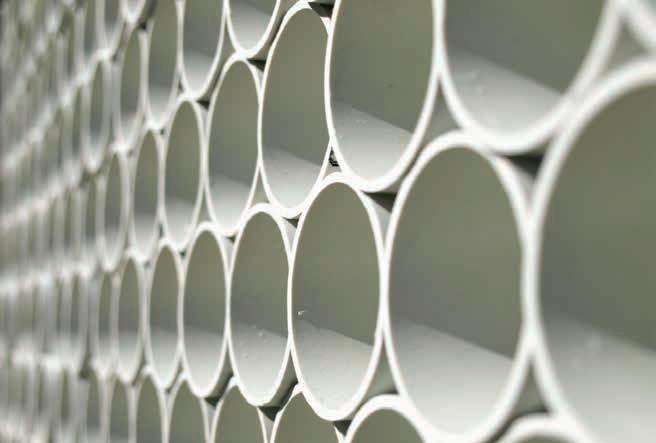
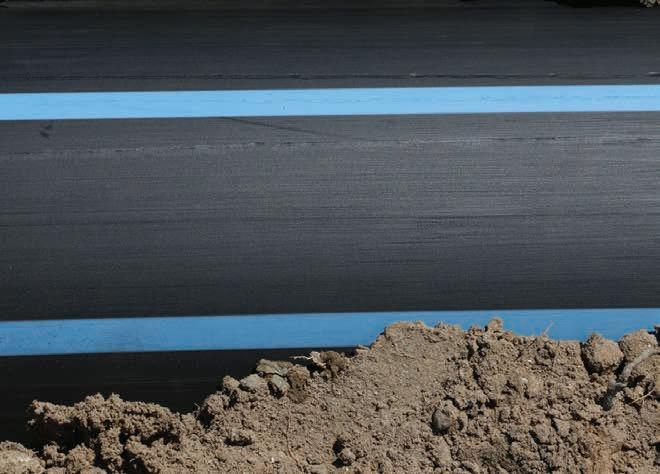
Spiral wound lining is a sustainable method of pipe maintenance, allowing water authorities and councils to renew their critical infrastructure. Interflow is an expert in this field and has been pioneering new techniques for decades.
SPIRAL WOUND LINING is a trenchless technology that uses a continuous plastic strip to form liners in gravity pipelines. This unique rehabilitation method originated in Australia and Japan during the 1980s. With four decades of installation history, the spiral wound method has been used on millions of metres of pipe across the globe. Like CIPP or slip lining, spiral wound liners provide a structural lining solution for fully deteriorated pipelines with minimal site disruption.
When it comes to Australia, spiral wound pipe technology is the most used product in the pipe renewal market. It has been used in the majority of pipes lined across Australia. Interflow has become synonymous with the technology, having installed more than 95 per cent of all spiral wound liners across the country.

Expanda Pipe
wound liner
Expanda was developed in Australia by Rib Loc, Interflow’s technology partner and released worldwide in
1990. Expanda has been installed throughout North America, Europe, and Asia. Interflow has been installing Expanda to renew deteriorated sewers, storm drains, and culverts in Australia since 1991 and in New Zealand since 2005. To date, Interflow has lined over 1.5 million metres of pipe with the product.
Expanda produces a PVC liner in intimate contact with the host pipe. It restores the structural integrity, reliability and flow efficiency of ageing sewer and gravity pipelines. Expanda can provide communities with an additional 50 years or more of life out of their pipelines. There is no need for heating or temporary softening of Expanda, which is installed with a mechanical process. This approach increases the range of applications where structural sewer lining can be implemented. The PVC liner is rigid, providing a smooth circular bore to restore the hydraulic efficiency of the pipe. The pipe material does not restrict Expanda.
Rotaloc spiral wound technology
Rotaloc is a Rib Loc development for larger sized pipes, released in 2000. It has been used to renew sewer and stormwater pipelines worldwide. Interflow has lined over 25,000m of pipeline with Rotaloc throughout Australia and New Zealand. It can provide a structural liner for deteriorated pipelines. Rotaloc has been installed under difficult site conditions with minimal community disruption. It is designed to bring back larger diameter deteriorated pipes and culverts to full service. There is no need to rely on the strength of the host pipe.
Rotaloc is installed by winding a continuous strip of interlocked PVC through the pipe using a custom winding machine. The machine moves through the pipe between access chambers or culvert openings and can adjust the diameter of the liner as it moves along the pipeline. It ensures the liner sits tightly against the host pipe, even if the diameter changes along its length. Once the liner is in place, the void between the liner and the host pipe can be filled with cementitious grout. This is typical in culvert applications to secure the liner in place.
Why have spiral wound pipes become so successful in this market? What are the main benefits to the installer and client?
First, spiral wound lining is made from a ribbed structure, giving it a high strength-to-weight ratio. That means less material is needed, making it a more cost-effective and sustainable solution. Such strength saw the Victorian Department of Transport introduce steel reinforced Rotaloc for rehabilitating three road culverts under the Monash Freeway. Rotaloc was strong enough to rehabilitate the three culverts without relying on the integrity of the host pipe.
Spiral wound lining can be installed while liquids flow through pipes without bypassing the flow. It can be deployed in numerous situations without disrupting people’s lives. The installation of the Rotaloc lining meant that there were no road closures on one of the busiest roadways in Melbourne. This saved time for the Department of Transport and headaches for tens of thousands of commuters daily.
The other challenge of the Monash Freeway culvert example is that each had different diameters. The Rotaloc solution worked seamlessly. At its most fundamental, the technique remains the same, regardless of the diameter of the pipe.


By locking strips of lining together, the installation process is entirely mechanical. There is no need for any curing or heating to prepare the lining for the pipe. Given the variable nature of pipelines, this is an enormous advantage. This was a suitable solution in Paraburdoo in remote Western Australia, where Interflow installed more than two kilometres of sewers with Expanda Pipe spiral wound liners.
When looking at any infrastructure project, a key component is
managing the community impacted by the works. Spiral wound lining installations tend to have small site footprints and minimise disruptions to residents. An example of this occurred as part of the Albert Street relining, which was part of the Cross River Rail Project in Brisbane. Interflow utilised its Expanda product to reline trunk sewer mains while only operating during limited windows at night in the middle of the Brisbane CBD.


Over the past 25 years, advances have extended spiral wound linings’ capabilities to larger sizes and greater load-carrying capacities. It has repeatedly been proven capable of renewing deteriorated sewers, storm drains and culverts. They can be utilised in applications where rehabilitation by lining would otherwise have been impossible. Latest advances have seen many of the limitations of these liners overcome. They continue to extend the possibilities for structural rehabilitation of an ever-widening range of deteriorated conduit configurations under a broad range of conditions.
Investment is being made in further research and development. These results should see the possibilities for further trenchless structural pipeline rehabilitation.
As with past advances, development
is taking place with the support of Australian and New Zealand water authorities. They have always encouraged such development. It represents a willingness to incorporate innovative solutions that can be seen to offer mutual benefits.
The Iplex EZIpit provides the latest advancements and allows innovative solutions for design and installation challenges. It provides excellent in-ground performance for sewer maintenance and inspection structures.
THE EZIPIT CONSISTS of highquality polypropylene bases, flexible polypropylene risers and GATIC covers. The EZIpit offers significant benefits and flexibility in the design and construction for sewer networks. Water authorities’ environmental, technical, and economic demands for water-tight and durable sewer systems are essential to the community’s sewer networks. Being primarily a plastic structure,
the EZIpit is lightweight yet durable. It provides high chemical resistance in harsh environments and throughout coastal locations. These attributes make the EZIpit fast to install and reduces the need for ongoing maintenance throughout its service life.
The EZIpit is designed for buried gravity sewer applications, and supplements Iplex’s plastic pipeline range. The EZIpit is used for
inspecting and maintaining sewer network systems. It consists of a base, a single-wall corrugated riser, a reducing cone for maintenance holes and a range of covers designed for trafficable and non-trafficable areas. The design allows safe access to the sewer from the surface.

“The speed and safety to install compared to some conventional products are two of its main benefits,” said Nathan Swaffer, Iplex’s Product Marketing Manager. “It is also very durable. Yes, it’s plastic, but it doesn’t mean it’s weak. Plastic is very durable in harsh sewer environments where pits can be exposed. Gases that develop and permeate through sewers have been known to corrode traditional materials used in such applications.”
When the EZIpit was being developed, product designers also considered typical ground conditions, including coastal environments, which are often prevalent in Australia.
“The surrounding soils can be acidic, which can attack some conventional materials,” said Swaffer. “They are known as acid sulphate soils. Then we bump up against the coastline, so we can have a lot of salt in our environment, which can also harm many conventional materials. However, being manufactured from polypropylene, the EZIpit is more durable in these applications.
The first example of the EZIpit used in Australia was in 2005 in southwest Sydney near Warragamba Dam. As part of a priority sewerage program, a project, known as the Mulgoa, Wallacia, Silverdale Backlog Sewer Project, was undertaken as a reduced infiltration trial project.
The EZIpits were selected as an
alternative to standard concrete utility holes to understand how the system would perform over time. They were paired with solventwelded pipe instead of rubber ring jointed pipe. Approximately 100 maintenance chambers and utility holes were installed.

Since then, the features of the EZIpit and its three different sizes (DN425, DN600 and DN1000) have been recognised and utilised by contractors around Australia. Michael Lancuba, Product Manager for Engineered Products at Iplex, added that the EZIpit has made life easier for communities throughout its deployment.
“The EZIpit is a lightweight modular system that makes it easy to transport into people’s backyards without heavy lifting equipment. That meant minimal disruption, a smaller footprint, and less risk of damaging people’s properties, like their fencing and driveways,” said Lancuba.
The Iplex team of Sales Engineers hold close relationships with their clients. They assist where required by providing support to customers and contractors who may have questions about the EZIpit.
“The main benefit for the contractor is the speed of installation,” said Miklich. “The integrated flex-swivel socket in the base meant that slight changes in alignment were possible to account for different pipe installation options.”
The growing use of plastic pits is changing attitudes across Australia. Plastic can last much longer and is more durable than many conventional materials. It’s a point that Lancuba focuses on when talking to local councils and water authorities.
“Plastics such as polypropylene have excellent chemical resistance.
Hydrogen sulphide gases and the resultant sulphuric acid can be common in gravity sewers, so plastic structures are resistant to sulphuric erosion. We sometimes find situations where the soil can also be acidic, and can attack the sewer, so plastics are more appropriate in these environments. The structures will provide years of corrosion-free service from a water authority and council perspective. That reduces the maintenance costs, which is a big benefit in their eyes,” said Lancuba.
Miklich added that the EZIpit had been designed for Australian conditions. For example, the seals in
the joints are designed to be watertight to Australian Standards and resist tree roots from penetrating the joints. This ensures the long-term durability of the EZIpit for decades to come.
“The components offer our customers flexibility in design and during installation. We can change the bases, the orientation of the pipes… the options are endless in terms of how we design the EZIpit for our customers.”
For more information, visit www.iplex.com.au/the-iplex-ezipitrange
IT’S HARD TO comprehend the vast network of plastic pipelines installed and in operation in Australia and around the world. Most of them are buried and remain in service for more than 100 years. The vat majority of plastic pipeline systems are still in their first life cycle.

“Plastic pipe systems are not only an engineered product designed to last a long time, safe for people and the planet but are also the smart choice, using resources responsibly and sustainably,” said the Plastics Industry Pipe Association of Australia (PIPA)’s Executive General Manager, Cindy Bray.
Plastic pipes are engineered products designed to last Plastic pipes have transformed the way we live. They deliver drinking water, gas, and electricity to homes. Plastic pipes also protect the wires and cables that provide internet services. They’re used in irrigation systems that are essential for growing food and carry away sewerage, rainwater, and stormwater, protecting communities. Long service life is critical for this vital infrastructure we all depend on daily.
“The plastic material used in manufacturing pipes is engineered
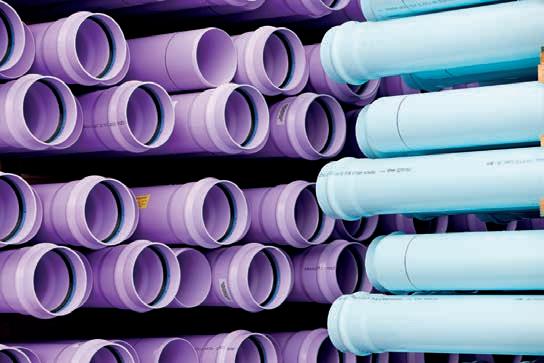
to be robust, reliable and recyclable,” said Bray. “They are intended and designed to last a very long time. The engineered polymers used are very stable materials. These properties are ideal for products such as pipes when long life expectancy is required.”
Durability is a result of product design
A product’s durability is the ability to remain functional without requiring excessive maintenance or repair when used in its regular operation over its design lifetime.
“For plastic pipes, it is intended that they can be installed and not require any maintenance or repair for decades, unlike other materials,” Bray said.
Plastic pipes can withstand a range of forces. They do not corrode or crack, resist chemical attack, resist abrasion, and maintain a smooth bore for easy fluid flow and better hydraulics. Many studies have been conducted in Australia and around the world showing the long-term performance of plastic pipes in operation, showing no chemical degradation and the pipe’s integrity still intact. These studies can be found on the PIPA website.
are designed to last for a very long time.
Safe drinking water is one of society’s most essential requirements for health. Most western countries take it for granted, but it is a critically managed resource from collection and storage to distribution. The pipe must provide a watertight system and not contribute to any water contamination. They are also designed not to leach secondary material into the fluid flow, which is essential for drinking water applications.
”Plastic pipe systems provide the highest level of safety for carrying drinking water,” said Bray. “All plastic pressure pipes in Australia must conform to the relevant Australian Standards. These Australian product standards mandate pipes and fittings to meet AS/NZS 4020. Testing products for use with drinking water is arguably the most rigorous
When delivering essential everyday services and utilities, key selling points of plastic pipes include durability, a long service life, high performance, simple installation, energy efficiency, recyclability, and cost-effectiveness.PVC plastic pipes
standard in the world. It assesses a product’s suitability for contact with drinking water.”
Plastic pipes’ long-term, leak-free integrity also prevents water loss, protecting the health of sensitive waterways and minimising flood risk. As a leak-free system, they eliminate the effect of erosion around the system. They have the flexibility to cope with soil movements and subsidence and protect the natural pH of streams and estuarine environments, reducing the likelihood of algal blooms and fish kills.
“Plastic pipes offer clear advantages regarding chemical resistance over other pipe options. They are not affected by soil environments highly corrosive to metal and concrete. They are not affected by compounds that form in wastewater, such as acids that rapidly degrade iron and cement lines pipes, making them the ideal choice for long-term infrastructure,” she said.
Many studies have been undertaken to assess the cost of water pipeline failures and the different water pipe materials. These studies show that plastic pipe systems have the lowest overall failure rates in water infrastructure. As such, it compares favourably to cast iron, ductile iron, steel, and asbestos cement. Corrosion is the primary cause of failure.
The Smart Choice
Plastic pipes have performed well in complete life cycle assessments (LCA), demonstrating high sustainability standards across the product’s life. LCA studies show plastic pipe systems have a better environmental profile than other materials.
“The manufacturing process for plastic pipes has a low carbon footprint. They are clean, have low emissions, and feature lower embodied energy,” said Bray.
When it comes to transportation, plastic pipes are lighter compared to other pipe materials. It generates advantages, such as more pipes per truckload. Lighter pipes are also easier to install. For open trench installation, plant equipment is minimised compared to heavier pipe materials. This can increase lay rates and reduce CO2 emissions.

The versatility of plastic pipe systems allows for the option for trenchless installation as well, particularly with polyethylene pipe. This allows for fewer disruptions during the installation or repair of existing pipelines allowing flexibility and cost-effective installation and lowering the impact on the environment and community.

Studies have been undertaken to compare a range of plastic and ductile iron pipes. Plastic systems have the lowest embodied energy, with tensile iron systems the highest. The PVC-O system can perform over six times better than the ductile iron.
There are three fundamental principles of a circular economy. They are designing out waste and pollution; keeping products and materials in use; and regenerating natural systems. Plastic pipe systems align with all three.
Bray noted that plastic is the material choice for pipe and supports a circular economy in a closedloop system. This is the case in
Their lightweight design makes plastic pipes perfect for many projects.
manufacture, design, installation, and performance.
“By using recourses responsibility through better design, we are working smarter. We’re committed. And we’re working towards creating a healthier environment and sustainable future,” she said.
Polyethylene pipes are highly flexible, suitable for smaller projects.

For more information on PIPA, visit their website www.pipa.com.au and visit their sustainability microsite pipa.com.au/our-sustainability-story

• Automated water quality testing

• Multiparameter system
• Laboratory grade precision and accuracy
• Self-calibrating and resistant to biofouling
• Automated cloud-based reporting
• Easily integrated into SCADA systems
• Early warning system in near real-time
• Mains and solar powered autonomous operation
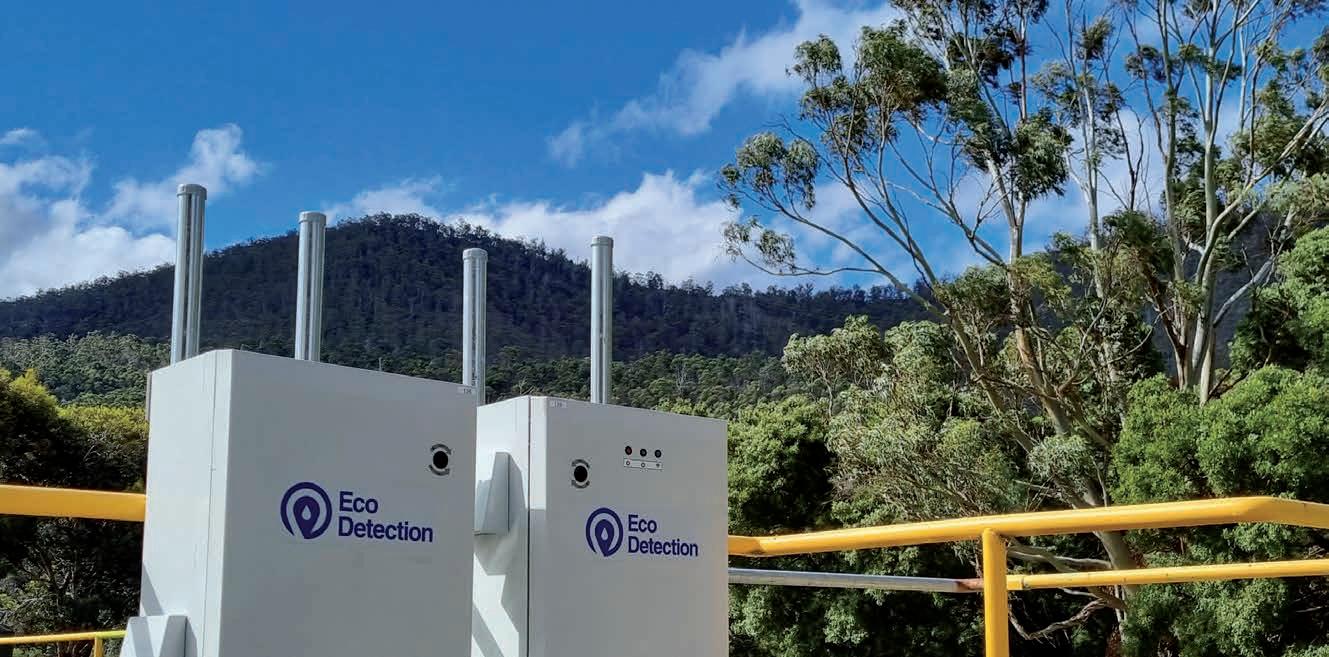
• Low cost user-replaceable reagent fluids and consumables
• Designed to enable installation of additional parameter sensors
Nitrite (NO2-)
Nitrate (NO3-)
Phosphate (PO4-)
Chloride (Cl)
Carbonate (CO3)
Fluoride (F)
Sulphate (SO4)
Ammonium (NH4+)
Magnesium (Mg)
Potassium (K)
Calcium (Ca)
Reduce cost, risk and delay. High frequency automated measurement at a fraction of grab sample analysis cost.
When local councils and water authorities want to digitise their water networks, there is a lot for them to consider. The Chief Technology Officer of Kallipr, Freddie Jansen van Nieuwenhuizen, understands the potential pitfalls of not planning.

Nieuwenhuizen is the Chief Technology Officer of Kallipr. He is responsible for the business’s overall technology enablement and R&D to ensure the convergence of Kallipr products and services through Internet of Things (IoT) devices. As such, he drives an integrated technology roadmap that promotes sustainable growth and a vision to incubate new areas of value creation.
“I started my life as an electronic and electrical engineer but early on pivoted into software engineering. Throughout my career, I’ve been exposed to all sorts of projects where I’ve had to integrate embedded software into mechanical systems and hardware, particularly for harsh and challenging environmental conditions,” said Jansen van Nieuwenhuizen.
Preparing hardware for physical environments

Jansen van Nieuwenhuizen spoke about several different aspects for councils and water authorities to consider when preparing to digitise their water networks.
“The strength and durability of the hardware installed in the field is the most important factor,” he said. “Councils must consider the expected life of the hardware device in the deployed environment. This impacts the economics of such a deployment. Manufacturers require significant R&D, discipline and accelerated testing to deliver a design that can meet a five to ten-year life span.”
It is not just the device cost but, even more importantly, the installation of the device. Jansen van Nieuwenhuizen said that the upfront cost of the device is often less
than all the costs and overall effort associated with a site visit.
Kallipr
devices are designed for
“One of our most fundamental design considerations and objectives at Kallipr is how to minimise truck rolls for our customers,” said Jansen van Nieuwenhuizen. “If a device is installed incorrectly, that almost certainly will require a repeat truck roll to fix the device installation. It’s a critical cost driver for councils and water authorities.”
Another aspect that councils and water authorities need to consider is the physical environment where the device will be installed and the key factors that could impact the life of the device.




The other side of the coin for Jansen van Nieuwenhuizen is that careful consideration should be given to an operational system’s overall economic model and business case. There are three key considerations to balance – what data, how often and for how long.
“Councils and water authorities must balance data collection and battery life. Trade-offs must be made to ensure the IoT solution meets the business case expectations,” said Jansen van Nieuwenhuizen. “Users must consider the data collection strategy alongside the battery life and operating costs. If data is not needed in near real-time, adopt a weekly schedule that will extend your device’s life. In essence, select the appropriate device for the use case and design the business model from day one.”
For example, the Captis device can capture 10-second samples and transmit this data every 15 minutes.
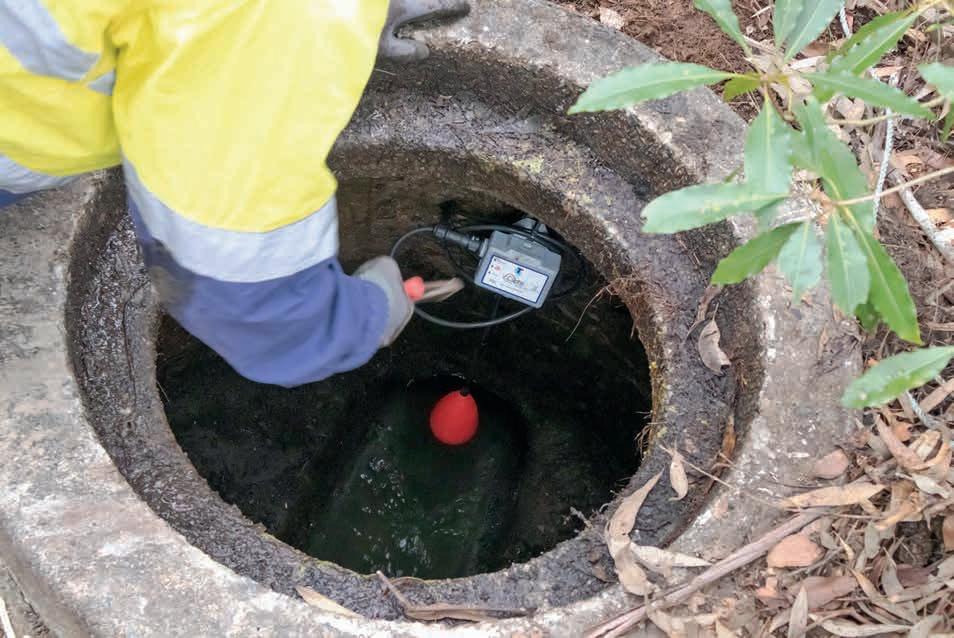
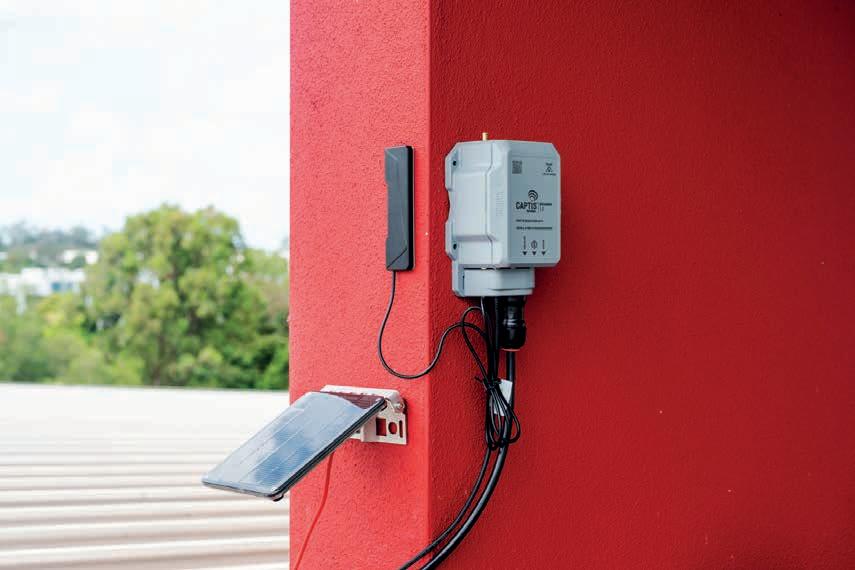
WOMEN IN INDUSTRY NOMINATIONS ARE NOW OPEN. Now is your chance to nominate an industry leader who you believe is advocating for positive change and deserves to be recognised.
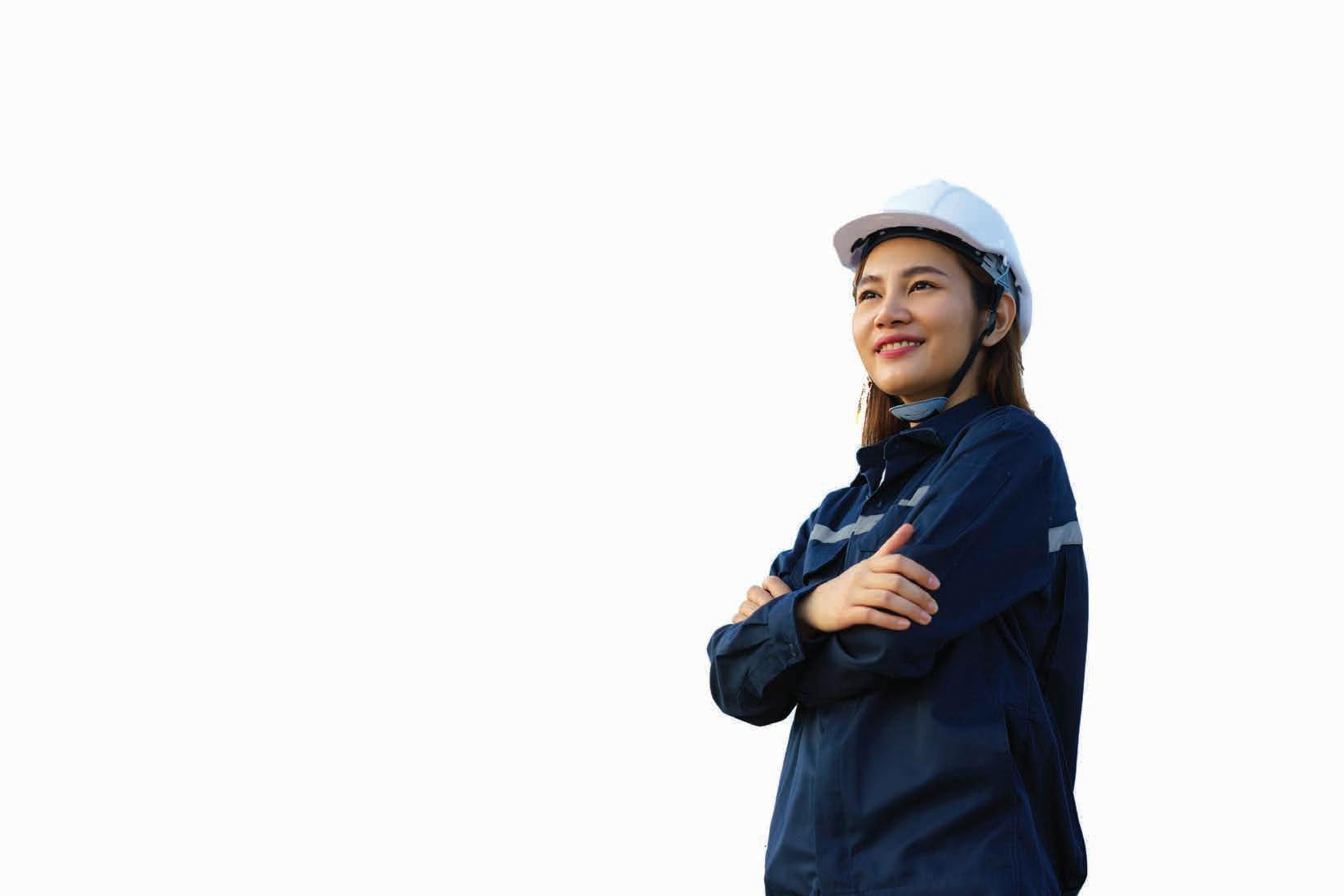
WOMENININDUSTRY.COM.AU






THURS 8 JUNE 2023
The Women in Industry Awards recognise outstanding women leaders from across Australia’s industrials sector.

TAGGLE SYSTEMS IS true blue, designed and owned locally, a leader in the Australian market with over 10 years of experience. It has nearly 300,000 endpoints already delivered in the field. An endpoint represents one of its integrated smart water meters or a Taggle device attached to a water meter. When about 600,000 endpoints are installed across Australia, Taggle has almost 50 per cent of the market share.
Led by Chief Executive Officer David Peters, Taggle has been working to make a difference in the world by saving precious water and money for councils, water utilities and everyday Australians by reducing water bills through finding leaks. The company is built on the expertise of some serious engineering talent.

“Our engineering founders were some of the guys who invented Wi-Fi,” said Peters. “They turned their mind to low power, wide area radio networks (LPWAN). It offers low-cost, low-power, long-range communications for many sensors and devices. Our devices last for 15 years on a single battery and are designed for the diversity of the Australian environment.”
When Peters looks at the take-up of Taggle technology, he can point to 67 customers across the country – primarily local councils and water authorities. That’s pretty good for a born and bred Australian IoT company.
“We delivered over 2.3 billion meter
readings in 2022—this volume of data provides valuable insights for our customers. Last year alone, we identified around 300,000 leaks which could then be addressed quickly. On average, they were fixed within fifteen days. These leaks might only have been picked up months after the next manual meter reads and billing cycle without smart meters. Even then, that lost water might be considered normal consumption,” said Peters.
On average, leak rates are at 90 litres per hour. Taggle’s leak systems recorded 16 gigalitres, about 2400 Olympic swimming pools, of lost water during 2022.
“Imagine if those leaks were left unidentified for months. The savings are huge, especially during droughts,” he said. “Focusing on leak identification and rectification, we’re providing a positive message for customers from the council. We can send an SMS or an email or arrange a call from the council when the platform identifies a leak of a specific size. It’s a plus for the council and the community.”
Preparing for digitising a network Taggle has delivered projects for councils and water authorities of all sizes. It has rolled out meters across entire regions at scale in one go, as well as smaller, staged rollouts over several years. Peters believes it is essential for councils to understand the different rollout options and how organisations adapt to the new technology.
“Some organisations roll out all the meters in one hit. Tamworth is doing
this now,” said Peters. “Townsville, Orange, and Bathurst, on the other hand, are rolling out smart meters in multi-year stages. They would install a few hundred or thousand meters annually and gradually replace their fleet. It accounts for their budget constraints while allowing them to benefit from the latest technology and adjust their plans accordingly.”
He gave the example of one council that rolled out just 500 smart meters as part of a pilot program. Straight away, they discovered 27 leaks and began their water-saving journey.
“The council realised they had to contact those customers and did not have a process. That’s a new business process for the council to put into place that they previously would not have known about,” he said. “It’s also a digital transformation that
Taggle Systems is the only Australian-owned tech company in the smart water industry, delivering nearly half the smart water meters in the country. Since its humble beginnings, it has worked to do good in the world.
they can do everything efficiently.”
The water sector within councils and utilities has a wonderful noncompetitive nature, all working together to drive innovation and improve processes.
“The strong network between councils and between water authorities sees them talk to and learn from each other,” he said. “We encourage this and held our annual user forum in Brisbane at the beginning of March. Taggle holds online and in-person events so our customers can share what they have learned from their system.”
What are the most common things that are talked about at the forums?
Peters has found that leak policies, leak rebates and sign-up incentives are consistently discussed at these forums, as they are topics that always pop up.
“When we have over 65 customers representing nearly 300,000 endpoints, there is a lot of information to share. The sharing of information
Aside from monitoring water flow through meters, Taggle also has solutions from sensors to software to monitor the water and wastewater networks. Collecting data from other sensors can provide a council with valuable insights to improve water management.
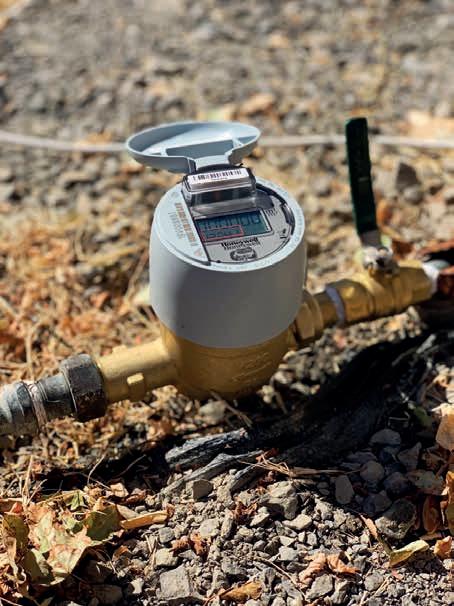
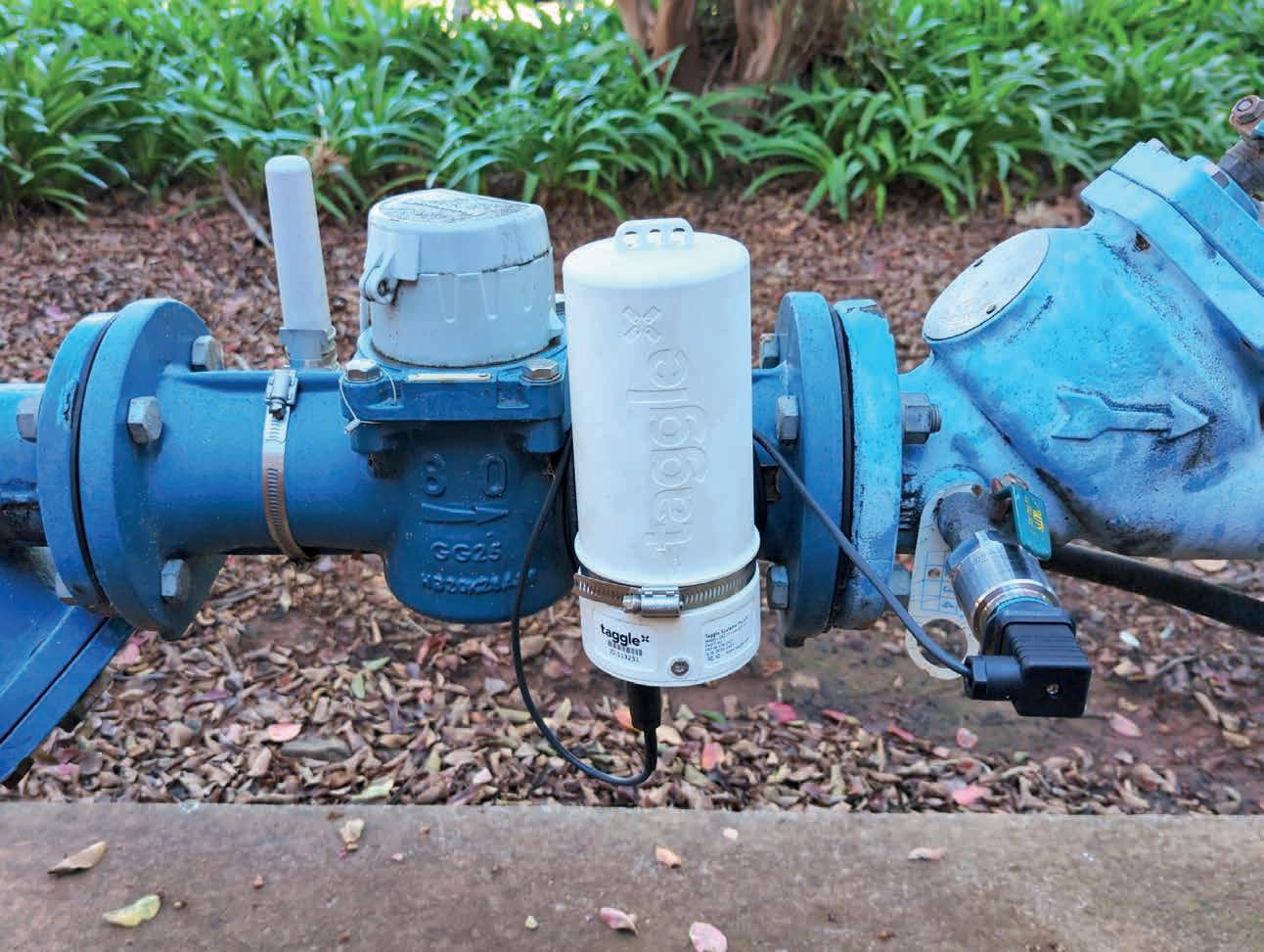
For example, understanding water pressure around the network can reduce stress on the infrastructure. It identifies any anomalies for rectification before a break occurs. Similarly, alerts to level rises and blockages in wastewater networks can prevent costly overflow events. These early warning systems are game changers for utilities operating and maintaining their networks.
“We make a range of devices for different use cases. Our latest device, the Cockatoo, is a versatile telemetry device capable of utilising different radio networks, protocols, and battery configurations,” said Peters.
There’s a physical robustness to Taggle’s products. Its warranty guarantees that all our 3rd generation devices we released this past year are designed for a battery
are installed in the front yard or pits and sit there, submitting to all the weather and environmental conditions nature can throw at them. The engineering quality standards we operate under are extremely high, and we continue to beat them for our customers.”
Having the right digital tools is critical when implementing Industrial Internet of Things (IIoT) projects. This is why having a provider like ifm ensures that wastewater projects operate efficiently.

THE COST OF air compressor leaks can be significant for any processing facility. No operator wants to squander compressed air because it wastes air, energy, and money. Leaks can also reduce system pressure, preventing air tools from working and impacting production. They can also cause air compressors to cycle more regularly. That means more maintenance and unplanned downtime.
This is why Freddie Coertze, National IoT Business Manager at ifm Australia, says the modern plant needs predictive maintenance tools to get the insights required to protect assets and prevent waste.
“Why does the modern plant need data science tools to prevent compressed air waste? Because a compressor doesn’t run on load all the time,” said Coertze. “It runs on
variable load depending on how much the factory or processing facility needs. To fully understand how the asset is performing, data needs to be collected from the equipment and analysed – but this is where there is a difference between solutions available.”
What’s the ifm moneo platform?
The ifm moneo platform has been designed to provide real-time insights into an air compressor that usually comes with employing data science experts. It utilises artificial intelligence (AI) and other in-built smarts.
“This is an AI-assisted, self-service predictive maintenance tool,” said Coertze. “It makes it very easy to harvest the data from a complex system. That’s control back in the hands of the business. They can
When the air compressor station in your factory is this big, eliminating inefficiencies is of vital importance.
achieve better productivity at their plant as a result.”
Coertze pointed to using the ifm moneo platform to monitor and improve air compressor usage in a wastewater treatment plant.
“All that is required is the moneo platform, which comes in the form of an IPC unit that ifm provides. It is easy to install and links to an IO-Link master. It collects data from the sensor devices,” he said.
Those devices include flow meters, thermometers, humidity sensors, pressure sensors and vibration sensors. There is also a current transmitter to sense how hard the compressor is working.
In the past, businesses have relied on data science experts to analyse equipment data and provide insights. Now, they can access these insights quickly and cost-effectively through artificial intelligence, and they can set this up with an easy, self-service tool. The IoT moneo platform is a self-service tool that enables successful predictive maintenance programs through the help of artificial intelligence.
Why use an air compressor in a wastewater plant?
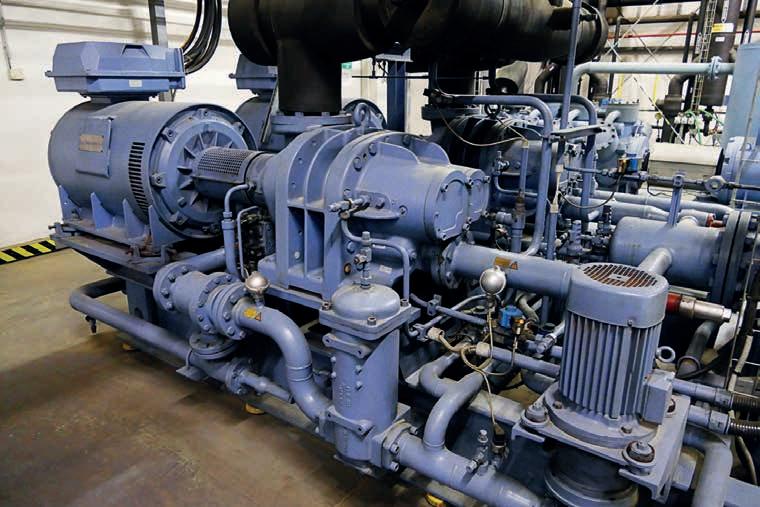
There are many reasons for using compressed air in a wastewater treatment plant. Filtration and aeration techniques rely on compressed air to operate correctly. Wastewater disposal through vacuums or suction requires compressed air for effective separation and removal.
Digestion tanks need compressed air to activate sludge with oxygen, boosting gas yields and retention time. Similarly, activated sludge tanks are designed for cost-effective sludge activation and maximised oxygen yield, which requires compressed air.
Compressed air also supports the movement of liquids, such as slurry liquids. Those pumps are powered by air compressors and keep slurries in suspension. That way, it can travel easily between tanks.
How does moneo work with air compressors?
Coertze explained that the moneo software draws on historical data to create parameters in which the compressor should work. It then compares this to the real-time data to analyse what is happening. Moneo applies a series of AI algorithms and machine learning as part of its digital solution for the supplier.
“The moneo platform showed that the air compressor had been running at a loss, primarily due to it using more energy than it should,” he said. “This was particularly the case when a plant was shut over the weekend. Through the moneo platform, we can give the treatment plant a holistic view of the entire asset. It also means that we can predict a future failure in the air compressor. Acting swiftly prevents that failure, and there will be no significant consequences.”
One platform to unite them all An air compressor is just one example of how moneo can help wastewater treatment plant operators obtain efficiencies. It is important to note that the platform should be rolled out across the entire plant to increase predictability through increased data. The open technology platform is designed for simple integration across multiple devices and plant infrastructure.
“To protect, you need to predict,” said Coertze. “The difference is that now we can harness AI’s benefits to simplify this process for any facility.”
By focusing on fitting into any module and interface, moneo will have users and their IIoT project ready to go as soon as possible. It is also designed to be industryindependent and manufacturerindependent. Such an approach
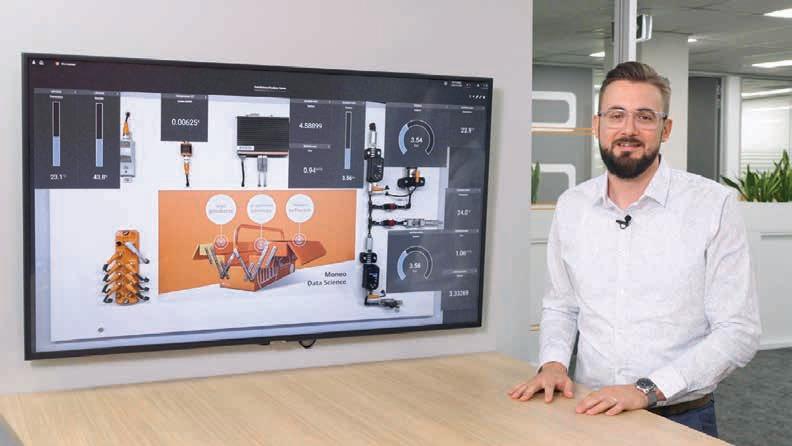
Australia, understands the importance of integrating moneo with the entire machinery ecosystem of your business.
allows any business to use it with its business operations. The modular system is flexible in adapting to the requirements of an IIoT project. ifm has the right modules for different applications and industries, whatever the sector.
“With moneo, we provide a pre-packaged self-service kit that you can expand on, depending on your changing requirements,” said Coertze. “This platform is a middleware that can sit between your sensor level and a higher-end system such as SCADA. With the in-built AI and automated machine learning, you don’t need to involve a data scientist to get real-time, actionable insights.”
To learn more about the moneo platform, visit www.ifm.com/au/en/ shared/moneo
PULSAR MEASUREMENT HAS spent years optimising and perfecting its sensors to work in numerous industries. In a new development, the REFLECT 2-wire radar sensor is designed for applications needing high accuracy, in situations of high electrical or acoustic noise, in digesters, and even in turbulent foamy applications.
The REFLECT 2-wire radar sensor provides accurate level or volume monitoring of liquids and solids in critical measurement applications, requiring minimal skills and human intervention. It outperforms products that, up until now, required frequent and costly manual intervention to validate measurement integrity.
FMCW radar technology
Using Frequency-Modulated Continuous Wave Radar (FMCW radar) technology, REFLECT transmits continuously, constantly varying the signal’s frequency. The frequency of the returning signal is compared to the signal being emitted at that moment. The difference between the two corresponds to the time the signal has taken to return. FMCW technology is the most accurate because of its narrower beam angle and, in most cases, more robust signal.
The operating frequency of 63GHz sits between most mid and highfrequency radar-level sensors in the market. One of the most
Its compact design has a small visual impact.
important reasons for selecting this unique operating frequency is the susceptibility of 80GHz sensors to inaccuracies in measurement due to the traditional orientation of devices. Using 63GHz with REFLECTTILT (ensuring the sensor is mounted correctly), the Pulsar Measurement REFLECT mitigates any associated weaknesses in other operating frequencies.
The small internal antenna provides a compact design, ensuring that a flexible deployment can still give the operators opportunities to orient the REFLECT correctly.
The hermetically sealed Pulsar Measurement REFLECT level sensor requires no routine servicing. It can withstand harsh environments while maintaining accuracy in the presence of dust, temperature, moisture, pressure, and chemicals. The IP68 enclosure is dust-tight and watertight, even if submerged.

The narrow 6-degree beam angle and unique built-in DATEM echo processing software allow the sensor to focus on the true level. That provides users with accurate data to make optimal operational decisions. REFLECT is also compatible with HART communication protocol and DTM drivers.

When users need the utmost confidence in their level measurements in any condition, Pulsar Measurement can provide peace of mind with a product that maximises benefits and minimises lifetime costs.
The REFLECT radar level sensor has been designed to support ultrasonic technology. Both technologies have their place in the world. Pulsar Measurement provides its clients with the choice of both, coupled with award-winning customer service and technical knowledge.


REFLECT uses a web-based app to change parameters, access trend reports, and view echo traces quickly and conveniently. The webbased app is accessible through any device (PC, Android, or iOS). Once the control app has loaded onto a device, users won’t need to worry about the signal. Using a web-based app also means there are no regular updates to install. Users only need to scan the QR code (supplied with each sensor), and they can begin using the sensor almost immediately.
Bluetooth is built into REFLECT as standard. Its range is user definable for added security and confidence, ensuring that only authorised users can access the device. Users can set the maximum signal range of each REFLECT to be between 4 and 40 m, depending on the size of the user’s facility. Users also have the option to disable the Bluetooth function for added security.
In ‘installation’ mode, REFLECTTILT ensures optimal measurement by using the built-in LEDs to signal when the sensor is level or giving the greatest signal strength. In ‘operation’ mode, these lights are used to indicate a change in measurement integrity and to provide confidence in the accuracy of the data.
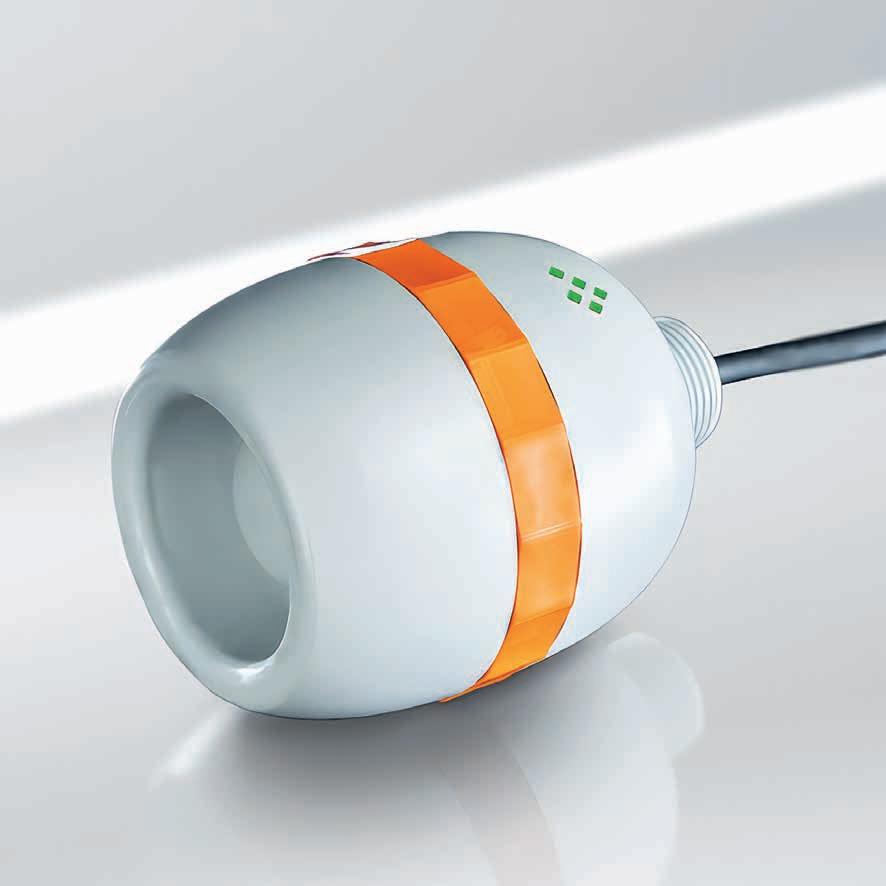
REFLECTTILT utilises a NAMUR NE 107-based traffic light system. A red
light means something needs to be addressed. An amber light is an early warning that something may not be right. A green light indicates that the device is working optimally.
REFLECT includes a patented BReez adaptor that is brand new and unique to Pulsar Measurement. Instead of threading the adaptor through lengths and lengths of cable, the BReez adaptor clamps to the top of the line and screws into the top of the sensor, making installation three times faster.
Designed predominantly for the water and wastewater sector, the compact one-piece construction of REFLECT can be mounted easily via the 1” BSP rear thread and BReez
Below: the simple design ensures users know what is happening by looking at it.
RIVERS CAN SUDDENLY overflow their banks. Drinking water can become scarce. A nature reserve may struggle with drought. In all these examples, water distribution strategies have to be rethought. This challenge is not unique to Australia, but many authorities across the globe deal with them regularly.
One such group in Belgium is the Flanders Environment Agency VMM (Vlaamse Milieumaatschappij). Although the authority can do little to change the volatility of the weather, it nevertheless plays a role in overall water policy.
The environmental agency measures and monitors water quantity and quality. It also manages water systems while levying fees on water pollution and groundwater extraction. VMM also advises on environmental permits. It is also tasked with supervising infrastructure planning and the monitoring and supply of drinking water. Regarding rivers or other flowing water, VMM relies on IoT solutions and adopts an integrated approach that limits the risk of flood damage and achieves a high ecological status.
In other words, VMM ensures that every user and consumer in the water distribution system is addressed. However, you can only monitor something that has been accurately measured.
Radar sensors are not bothered by dirt, sunlight, fog, wind, or rain. They also do not require mechanical protection from high floodwaters. For that reason, the decision was made over 15 years ago to change the sensor type. Since then, VMM has relied on radar technology from VEGA.
It first worked with the radar level sensor VEGAPULS 61 with PVDF antenna for many years, then later with VEGAPULS WL 61. During the collaboration, it appreciated the solution-oriented attitude of the Schiltach-based company.
“Whenever a problem arose, the service and additional information provided by VEGA was excellent and helpful,” said Johan Eylenbosch, a hydrographer and electrical mechanic at VMM. This was to be reconfirmed by the next project the agency undertook.
Due to climate change, a new challenge arose. They had to come up with a way to get a comprehensive overview of water levels at a variety of locations at any time of day. VMM’s idea was to build a fine-meshed network of real-time level measuring points. Some of the critical measuring points included smaller, nonnavigable watercourses.
Installing a VEGAPULS is simple and does not impact residents.
In these smaller watercourses, information was gathered to help mitigate water shortages or predict floods. Such measured values formed the basis for taking more far-reaching decisions. These decisions included introducing local or regional water withdrawal prohibitions. VMM was mainly focused on periods of prolonged drought, which had been the day’s order in recent years.
Somewhere in the middle of nowhere
To improve water management, VMM wanted smart IoT-level sensors for continuous level measurement of rivers. Until then, setting up such measuring points had only been possible with considerable effort and expense.
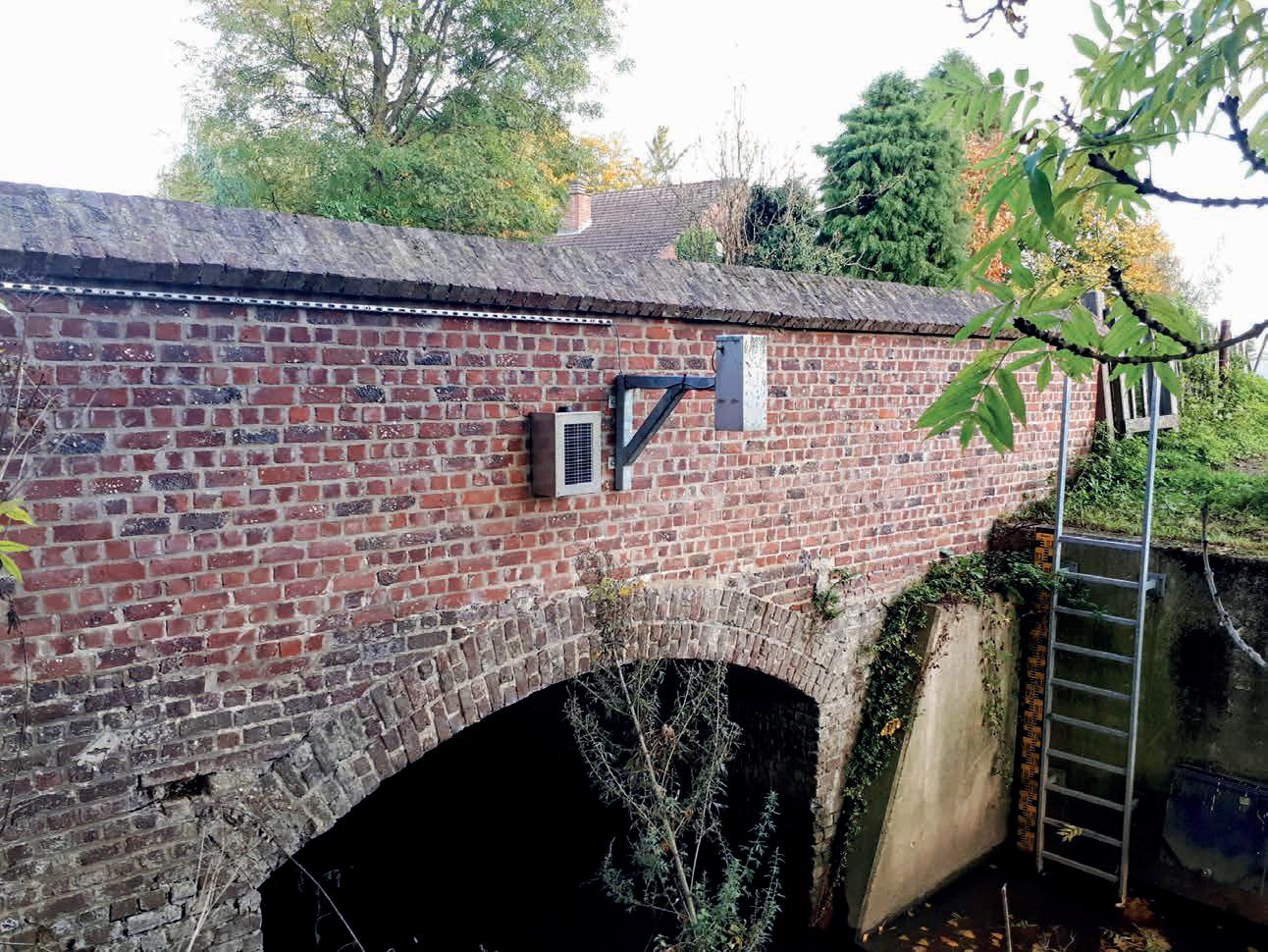
In the early days, ultrasonic sensing was used to measure the water level in non-navigable streams, canals, and rivers. However, the sound propagation time depends on the temperature, which can result in significant measurement errors. Thick fog, wind, rain, and dirt build-up can influence ultrasonic measurement. The debris interferes with the measuring signal, increasing the blocking distance typical of ultrasonic sensors.
Tracking water levels in rivers, channels, canals and pipes is a critical issue for water authorities. VEGA has a product that can help authorities track the rise and fall of water throughout its critical infrastructure.
“To install a river level measuring point, the sensor and adequate housing had to be set up in the middle of nowhere. The necessary cables would be laid underground. We also needed special software to configure the system. We also had to collect, amalgamate, and process the measurement data,” said Eylenbosch, citing a few of his concerns at the time.
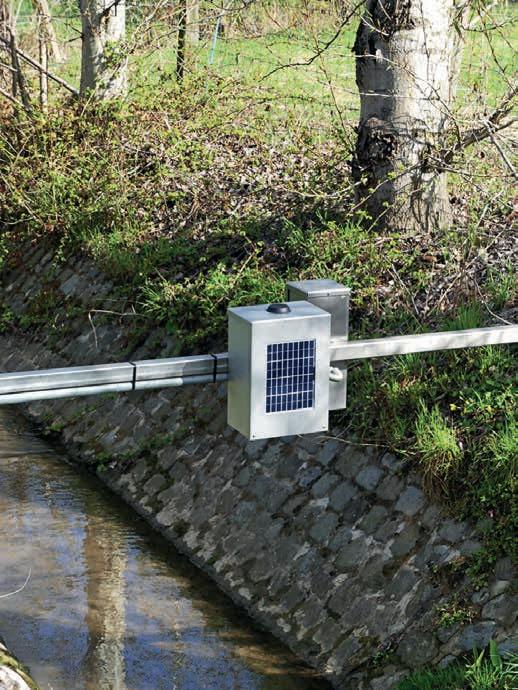

When the new compact radar level transmitter VEGAPULS C 11 became available, many problems vanished. The instrument contains a newly developed radar microchip optimised for level measurement requirements. Due to its high integration level, it was possible to build compact sensors.
The new VEGAPULS C 11 measures with a frequency of 80 GHz, which enables excellent signal focusing. This allows better separation of measurement signals from interference signals – measurement is thus much easier and more accurate than other measuring methods, such as ultrasonics. The small beam angle of only 8 degrees is suitable for the application.
“Some channels are very small,” said Eylenbosch. “Thanks to the narrow measuring beam, there are easier ways to install the sensor in tight spaces. For example, we can mount the sensor very close to the wall.”
The new radar sensor can be immersed in water in the event of a flood due to its encapsulated cable and protection class IP66/68,
Every 15 minutes, the radar measurement is activated, and the measured value is sent to the VMM database via a remote telemetry data logger.
“This makes it possible to gain a better insight into our water supply and distribution reality and to
calibrate our hydrological models,” said Eylenbosch.
Once the decision was made, VMM procured 50 compact VEGAPULS C 11 radar level sensors and installed them with micro-controllers at numerous locations in five provinces. The exact location of each one is determined via a GPS module built into the data logger.
“Most measuring points are in open watercourses and are not problematic. We could also have used ultrasonic or pressure sensors,” he said. “The radar sensors operate via Bluetooth and are easy to install. They also have a high measuring accuracy while featuring a very reasonable price. This tipped the scales in favour of radar measurement technology. The instruments are also solarpowered. That makes them even easier to operate and maintain. Their significantly lower energy consumption was helpful in many respects.”
He mentions another feature – the
taken and transmitted at all times.
Eylenbosch is convinced that the need for additional measuring points will increase. Expanding the sensor network is not a problem. A new level measuring point can be implemented quickly and easily at any time and integrated into the existing network. Once the level measurement module is installed, the instrument goes online automatically.
The administrator only needs to fill out a few fields in a digital activation form beforehand. All subsequent measurement data is automatically transferred to the database continuously. This ensures that the level data becomes quickly available on the data platform.
For more information, visit www.vega.com
We now have reliable, energy-efficient measurement 24-hours a day.
”
A new mathematical model that predicts how a tossed stone will skim across the surface of the water has potential applications in aircraft design, found a study involving University College London (UCL) researchers.
The mathematical model, published in Proceedings of the Royal Society A, factored together the possible shapes and weights of a stone, the different speeds and directions of a throw and the momentum and pressure of the water as the stone impacts. It predicted how long, how far and how high a stone could skip off the water.
The team from UCL and the University of Bristol found that flatter stones are better at skimming farther, but larger “fatter” stones can elicit a “super-elastic” response from the surface of the water and bounce higher.
“Our research shows the role of a skimmer’s mass and shape in determining whether it successfully skips out of the water or sinks into it,” Dr Ryan Palmer of the University
of Bristol said. “It also reveals a relationship between these two characteristics, with a more curved underside enabling heavier bodies to skim that would otherwise sink if they were flatter.”
The findings have multiple applications, including for engineers building the landing gear for planes that land on bodies of water. They need to predict how their designs will behave when touching down accurately.
“Strictly, there is no optimal shape,” said Professor Frank Smith (UCL Mathematics). “It depends on what you are after. In addition, there are many factors, such as weight, inclination, throw speed, wind and water response. However, curved bodies usually perform better, and weight matters a lot. Traditionally, flatter round ones are preferred in stone skipping, but heavier curvier ones can do a great job.”
The team found there was a relationship between the mass of a tossed stone and the curvature of its underside hitting the water. This relationship affects how high and far it will rebound into the air.
When a stone first descends into the water’s surface, pressure builds up underneath as the water resists the stone’s entry. If the pressure is high enough and at the proper angle, the stone will skip out, but if not, the stone sinks below the surface.
As a tossed object gets larger and heavier, it needs a curvier bottom to build enough pressure to leave the water. However, even large stones with a rounded enough underside can induce a significant bounce when thrown at the right speed and angle.
“The research is important for air, land and sea vehicles,” added Professor Smith. “Up in the clouds, vast quantities of ice particles impact upon meltwater on the aircraft surface and then skim downstream. The skim transfers heat. Combined with all the accompanying ice formation, it can affect aerodynamics in a risky and sometimes disastrous way.
“The sweet application to stone skipping comes out as a by-product of the serious stuff. Much of the same physics is involved throughout. Naturally, there is also the natural curiosity, enjoyment, and popularity to consider.”

To finish each issue, we aim to look at the lighter side of water and water-related issues. If you’ve seen an amusing story, let us know so we can consider it for the next issue.







We are a global team unified in a common purpose: creating advanced technology solutions to the world’s water challenges. Developing new technologies that will improve the way water is used, conserved, and re-used in the future is central to our work. Our products and services move, treat, analyse, monitor, and return water to the environment, in public utility, industrial, residential, and commercial building services settings. We also provide a leading portfolio of smart metering, network technologies, and advanced analytics solutions.

